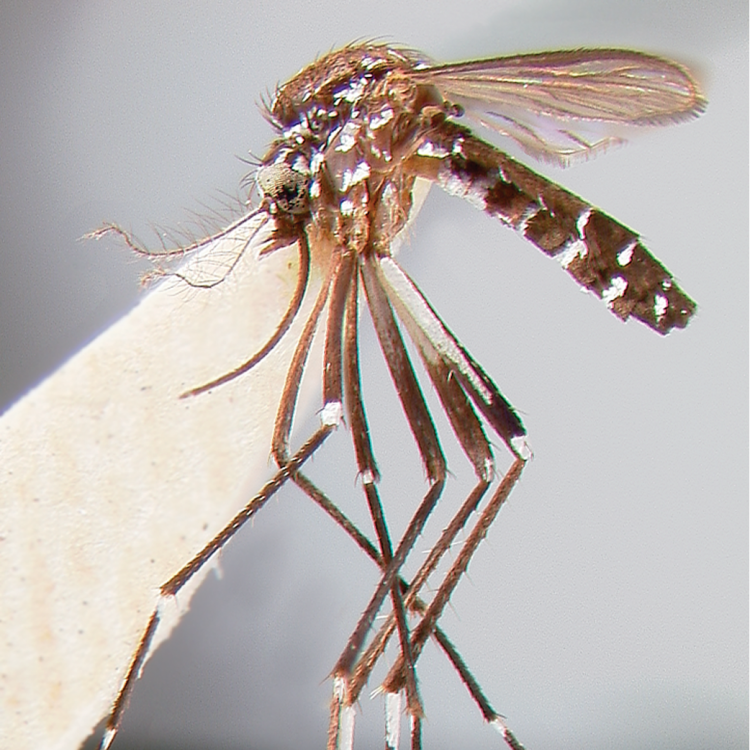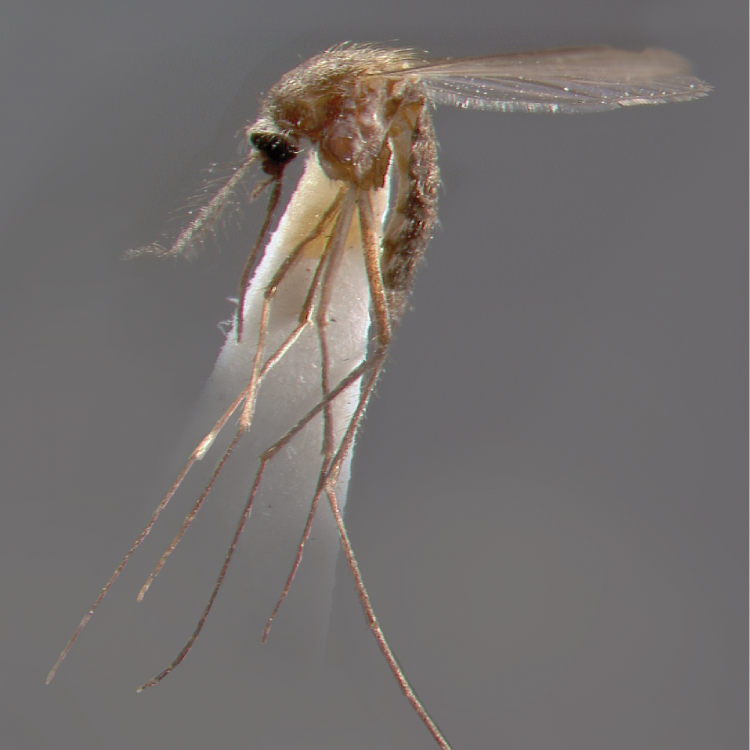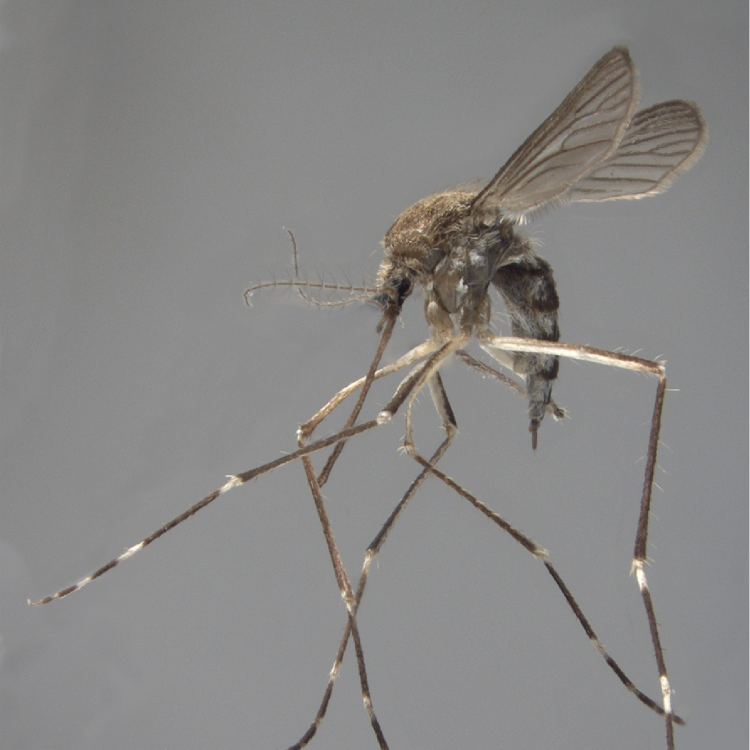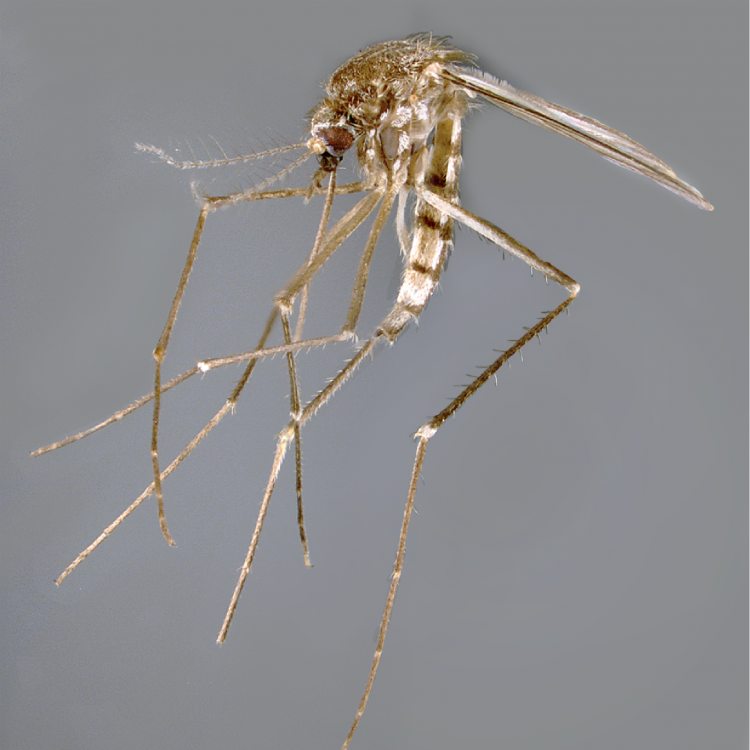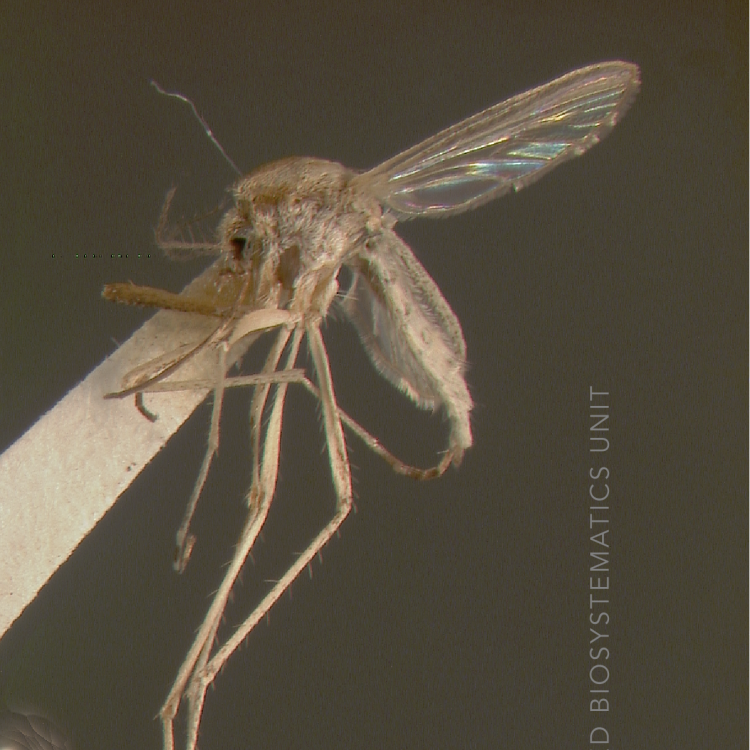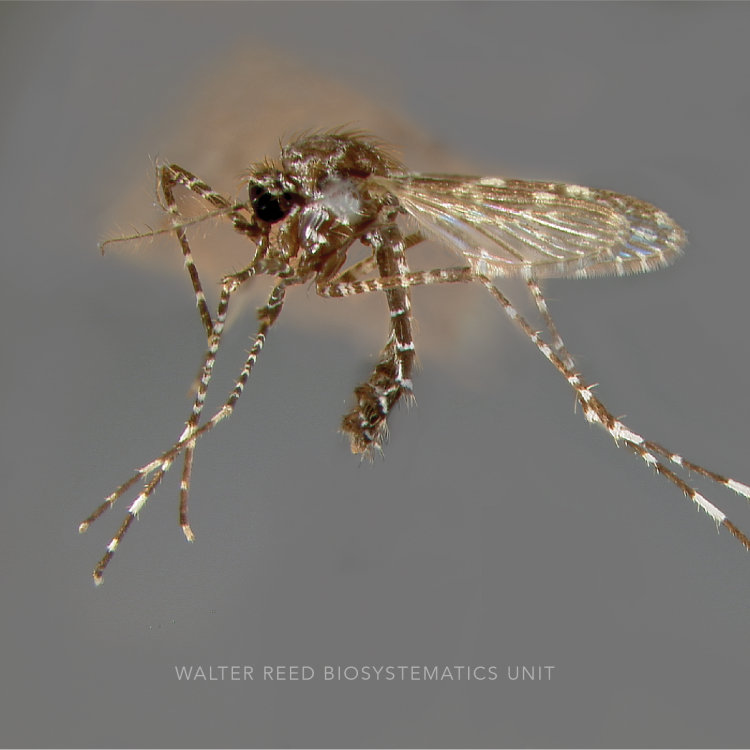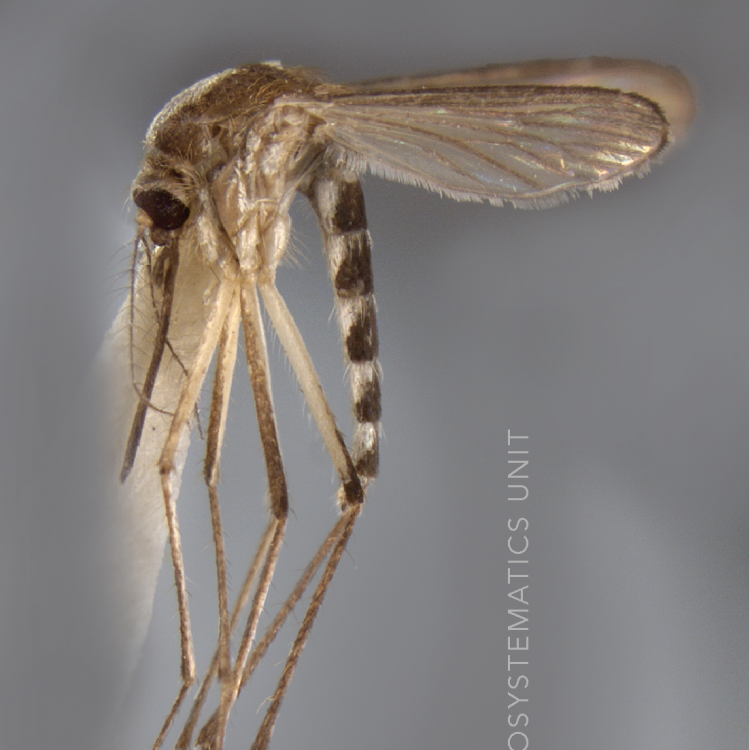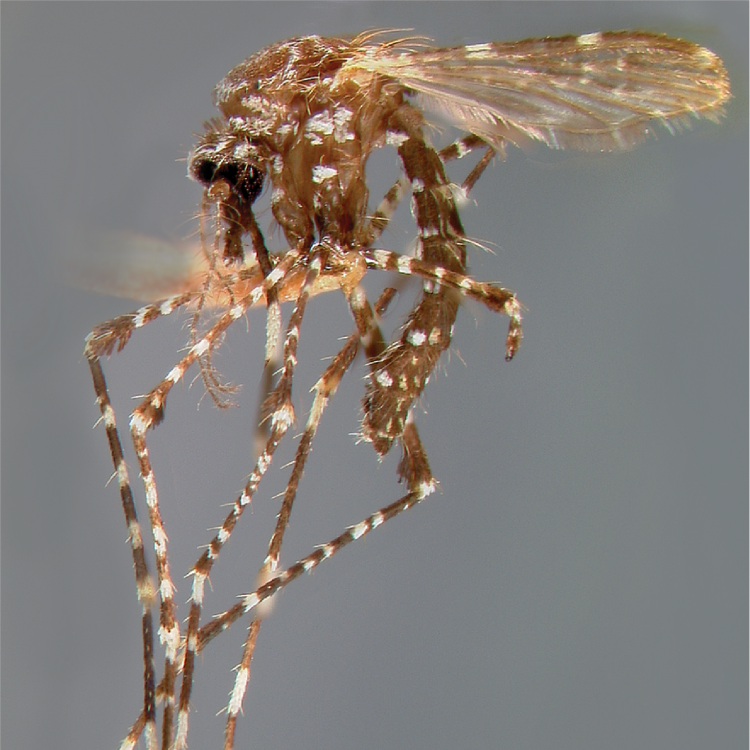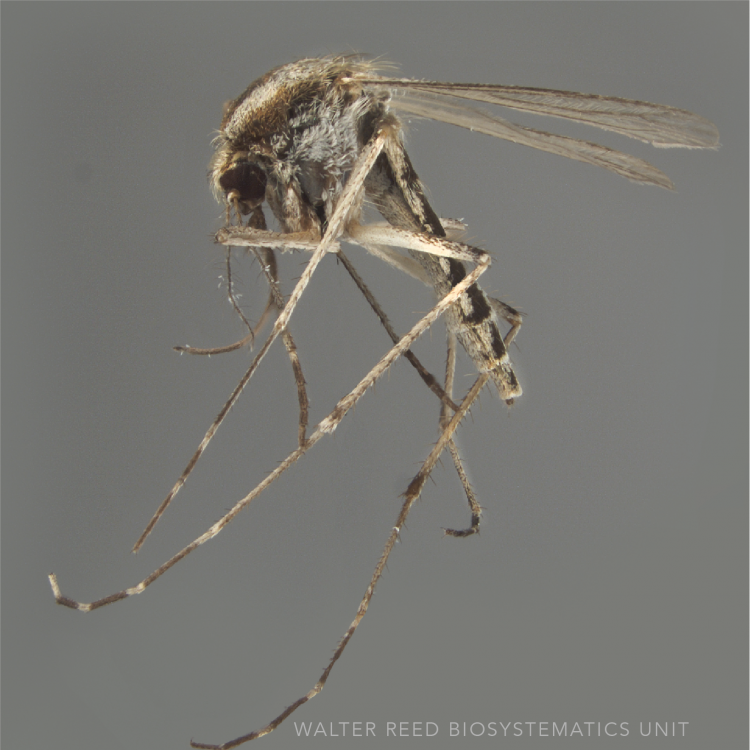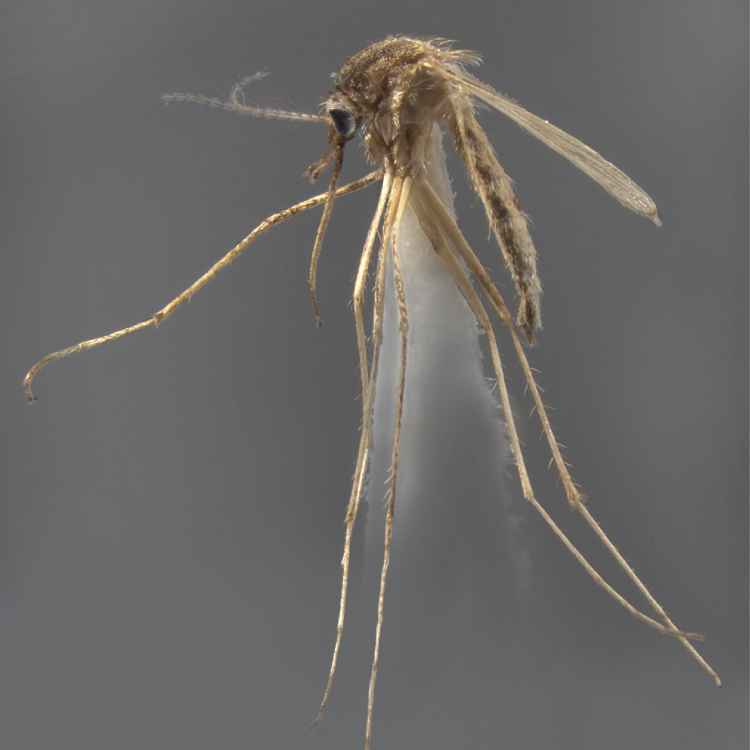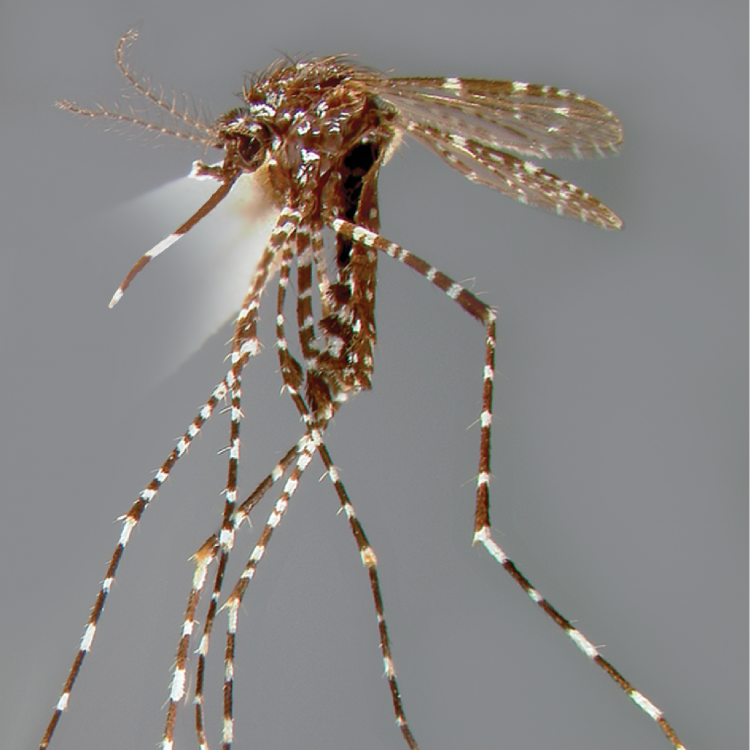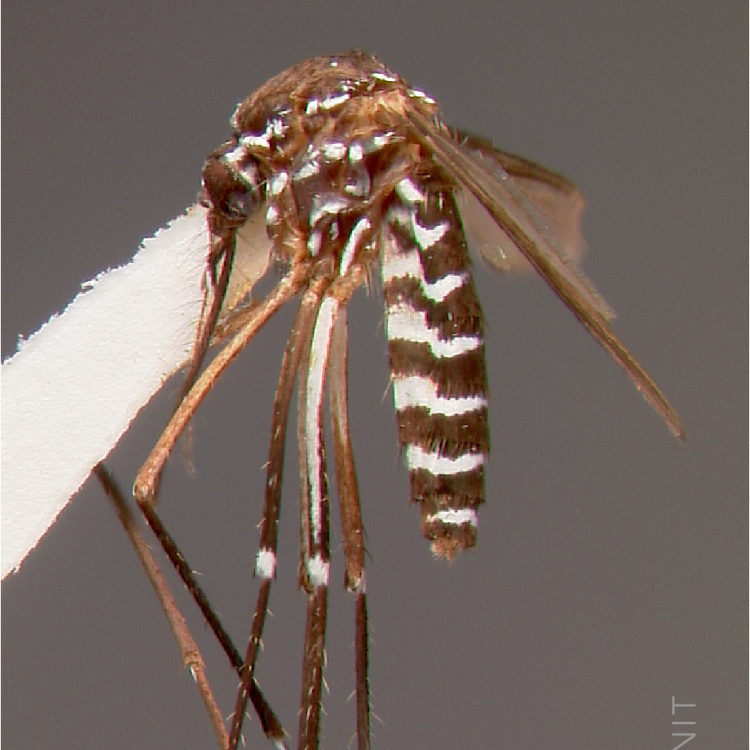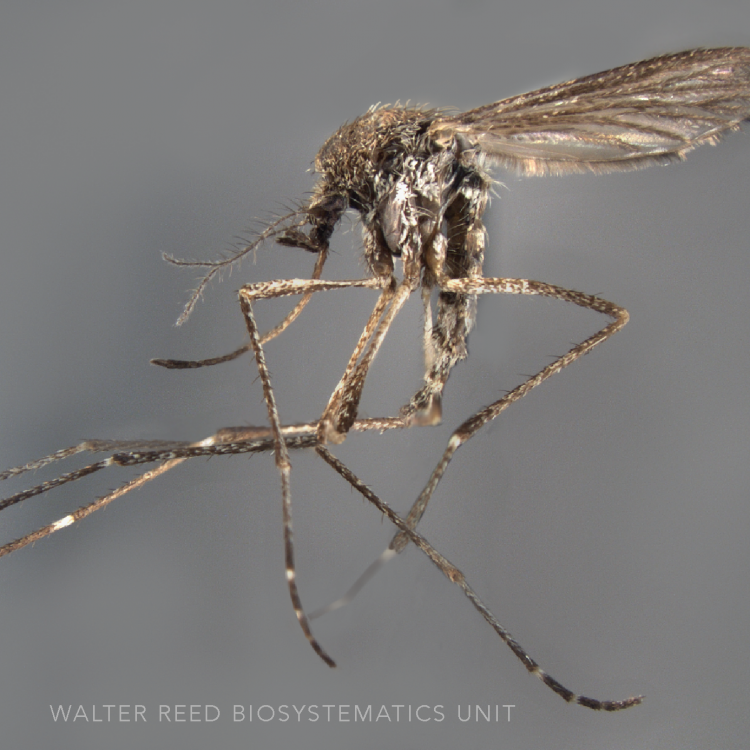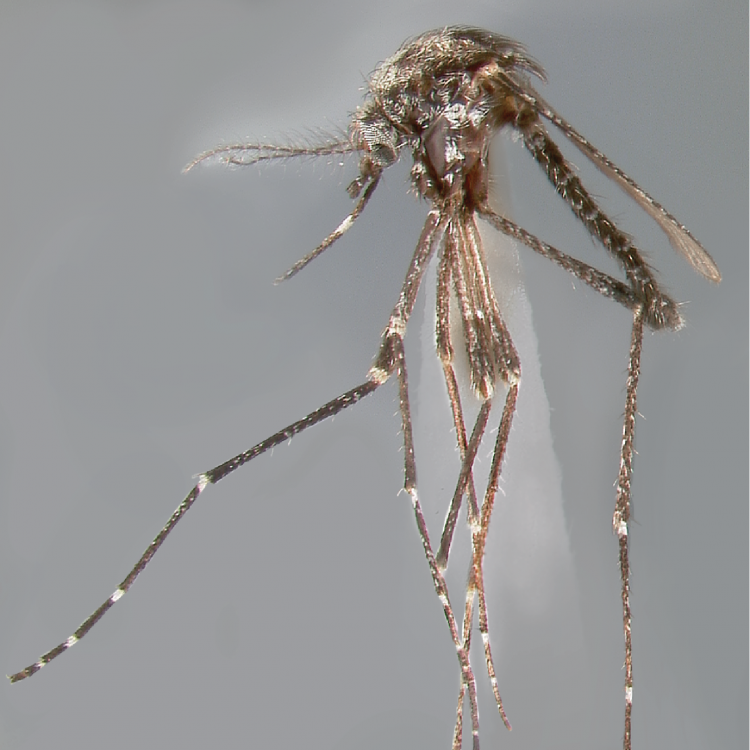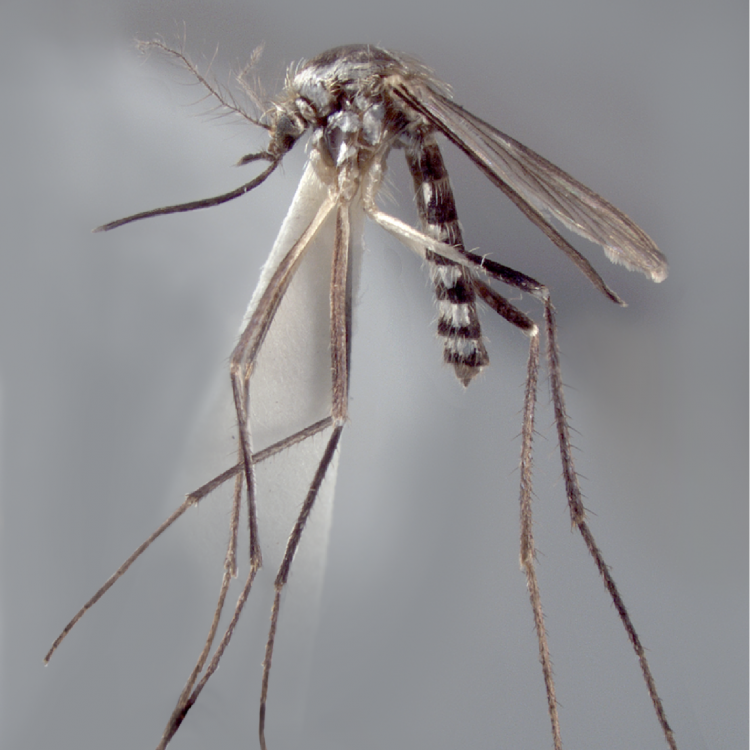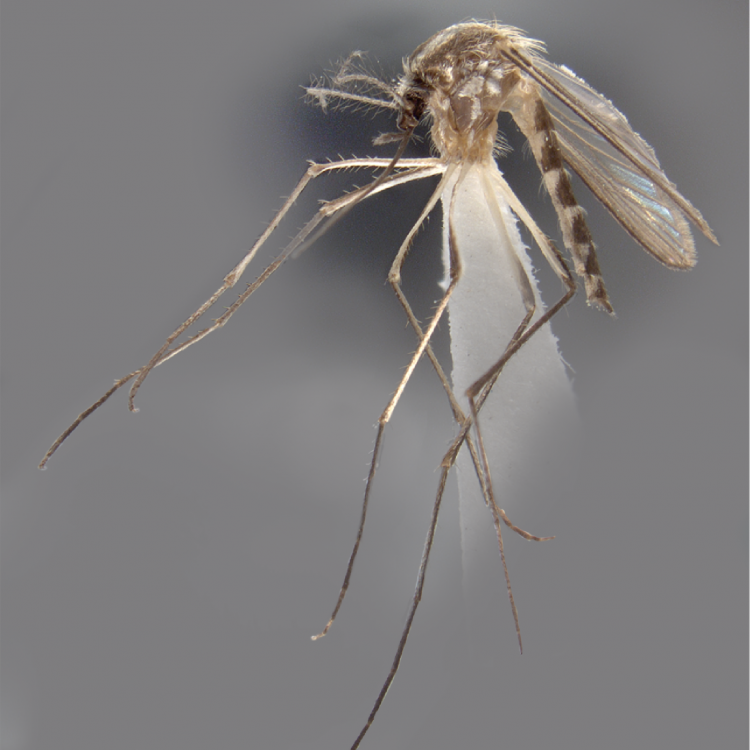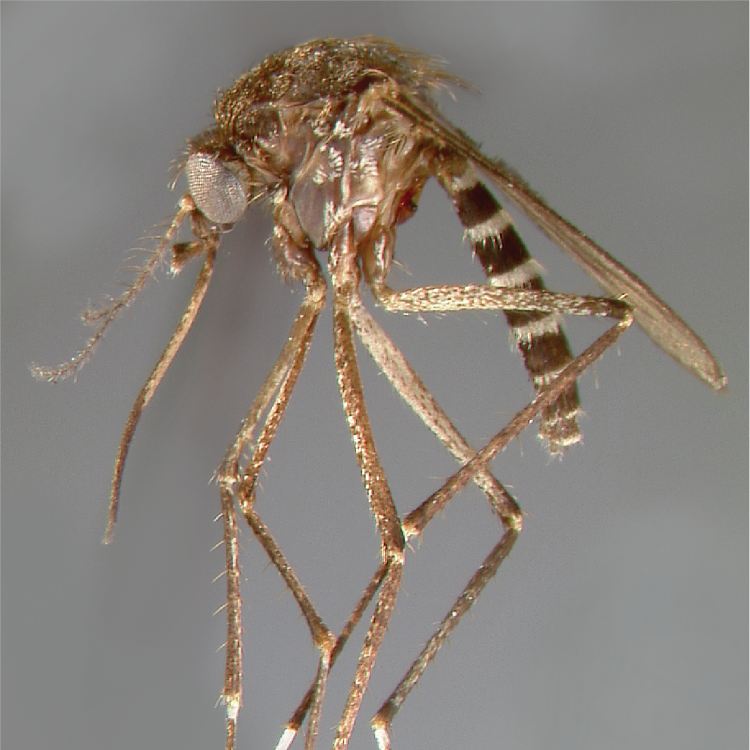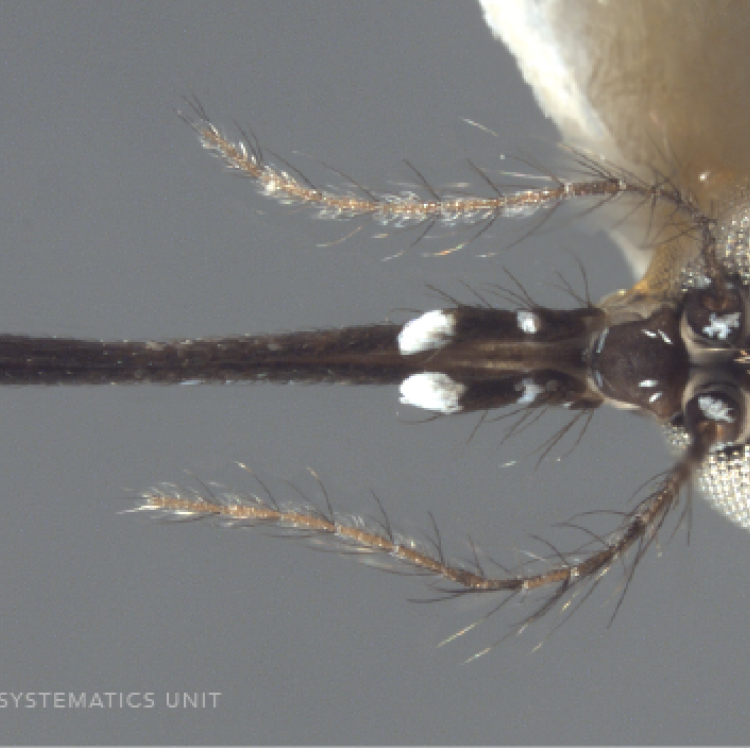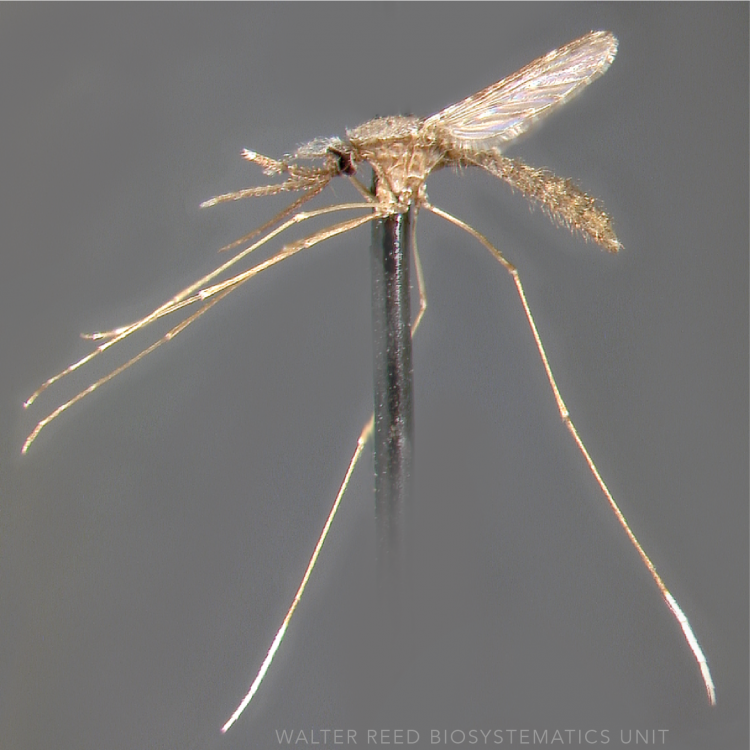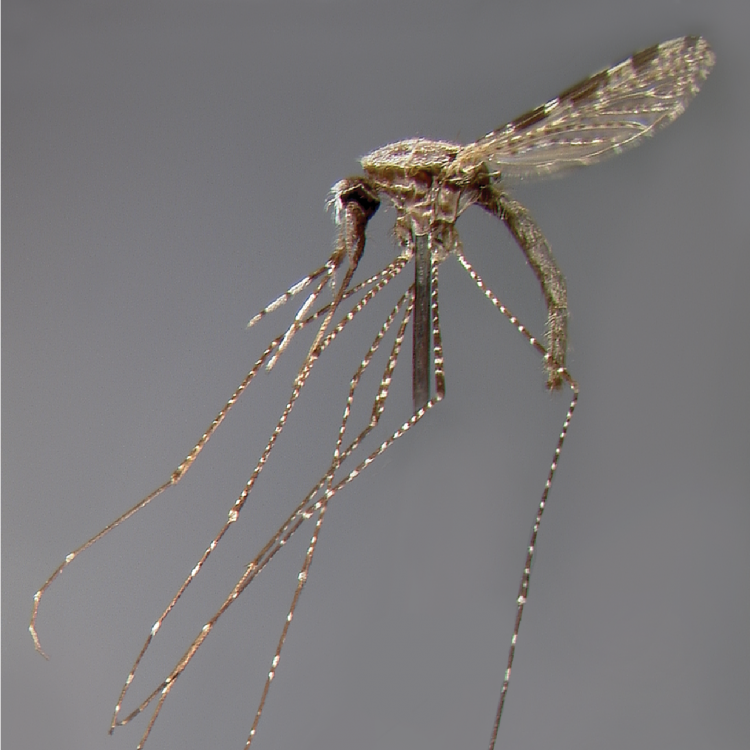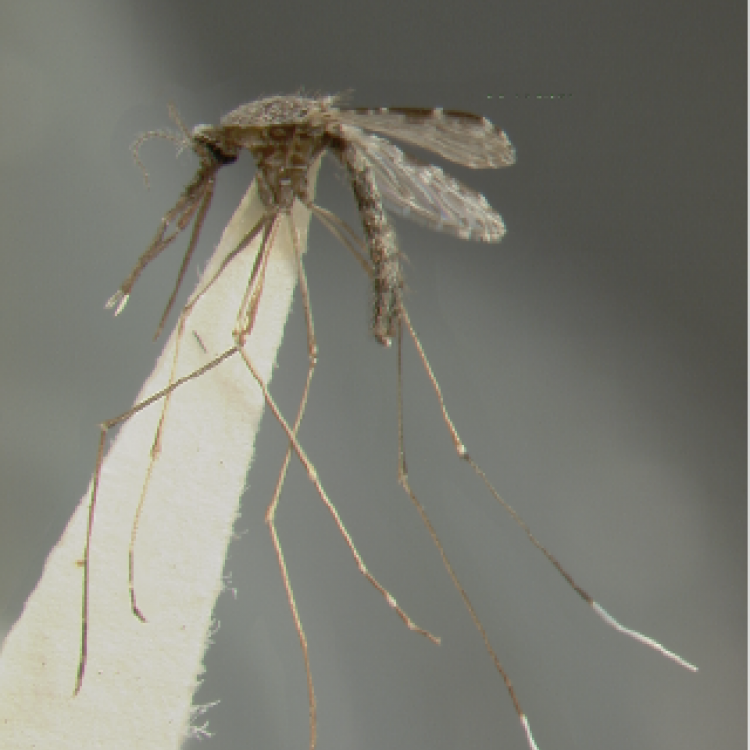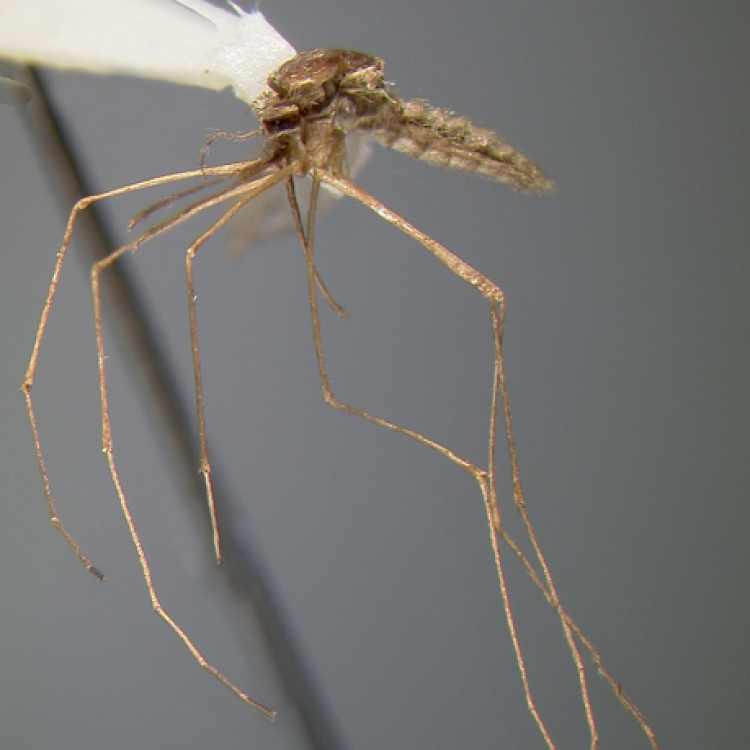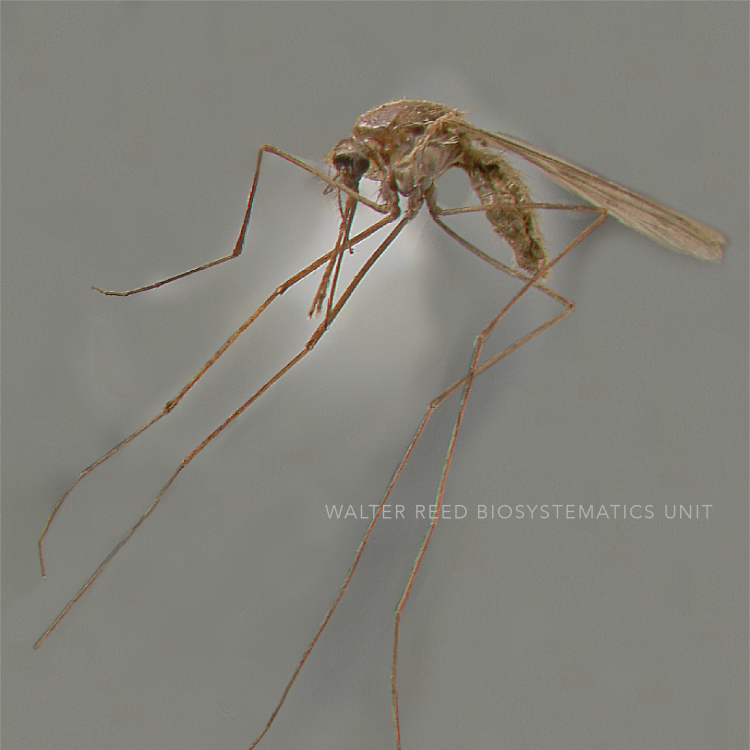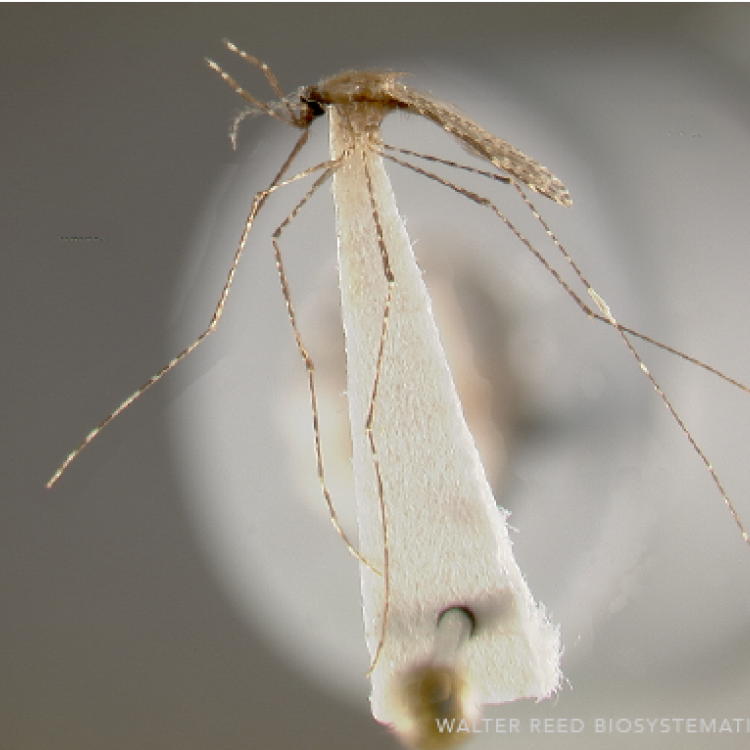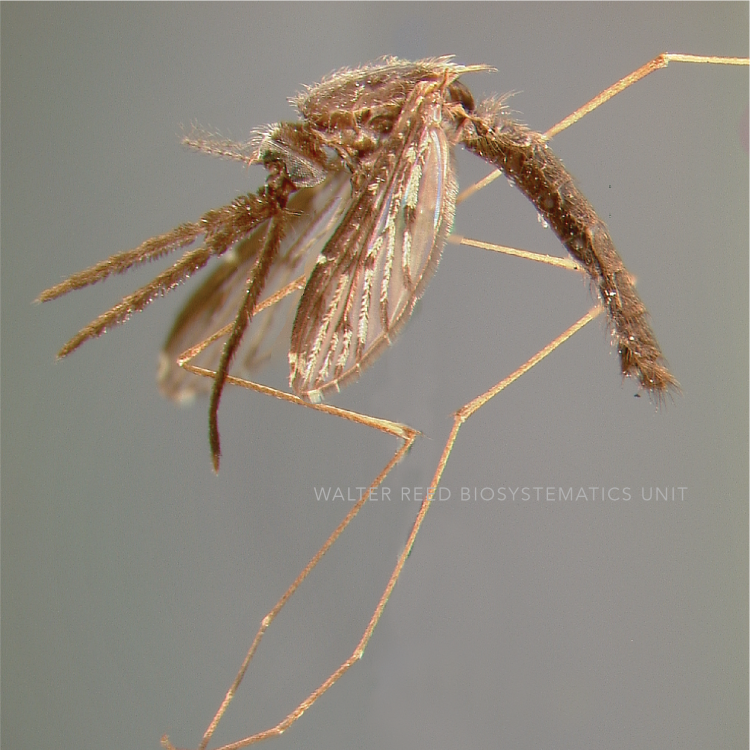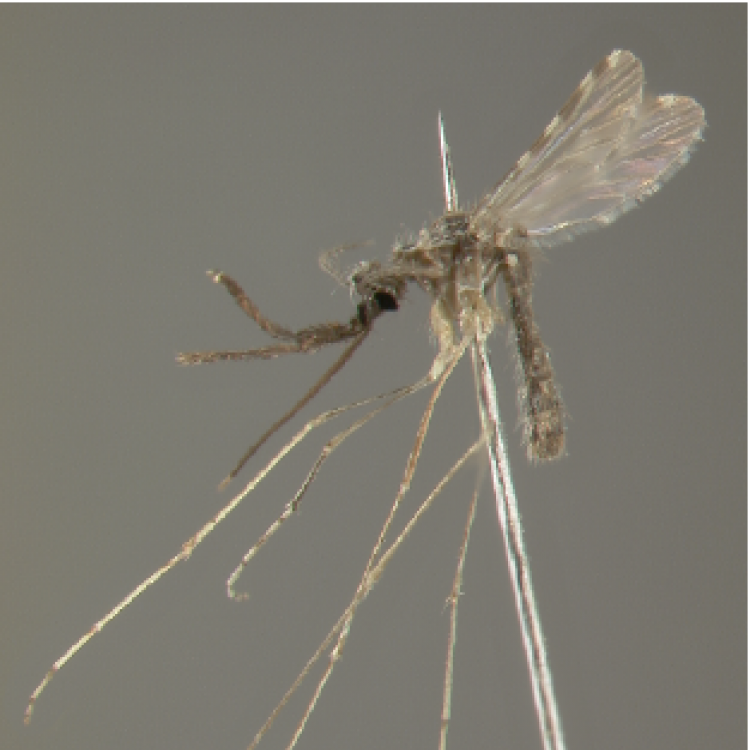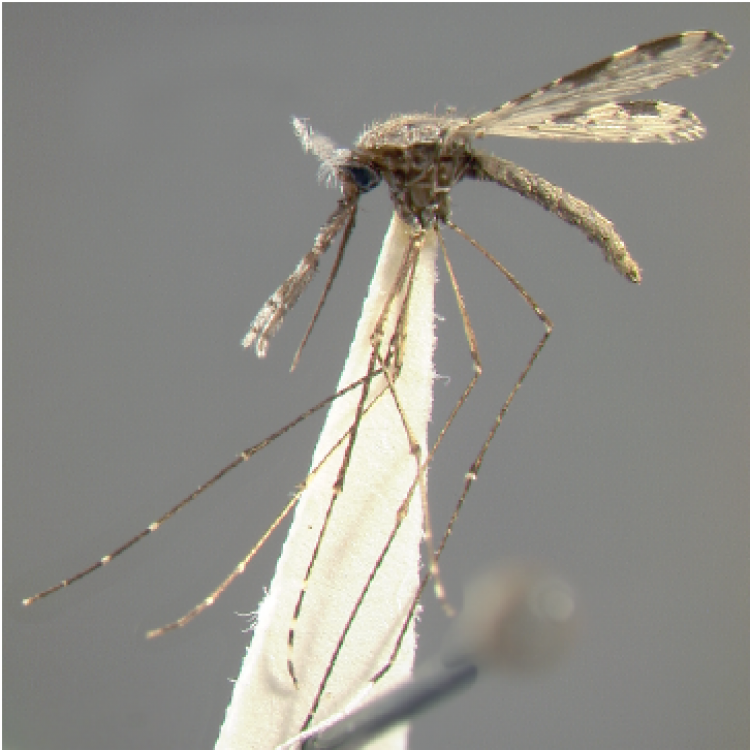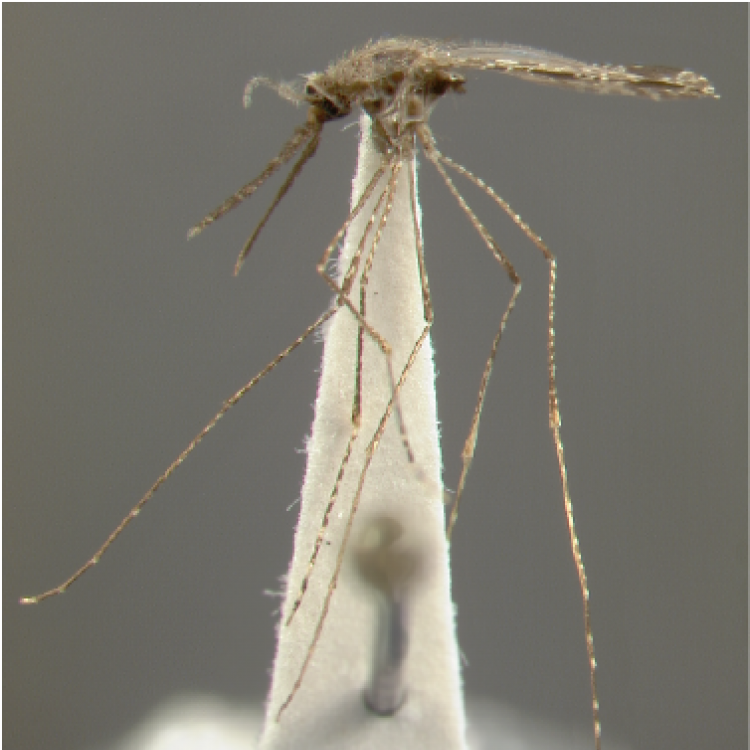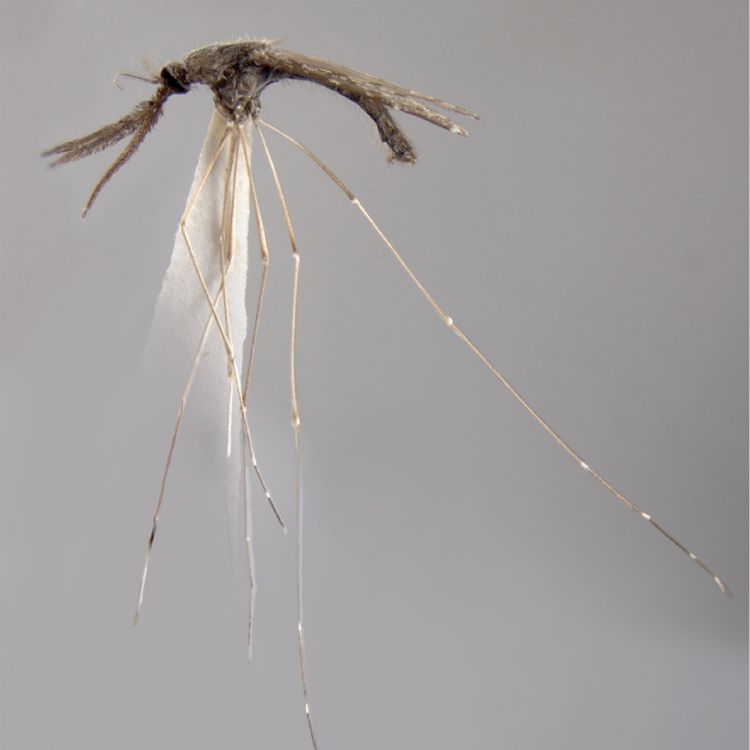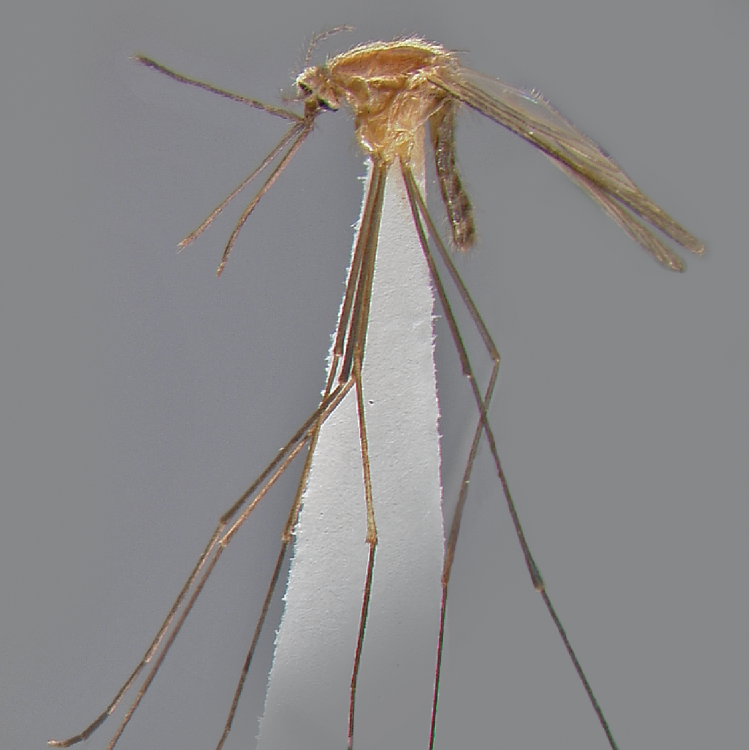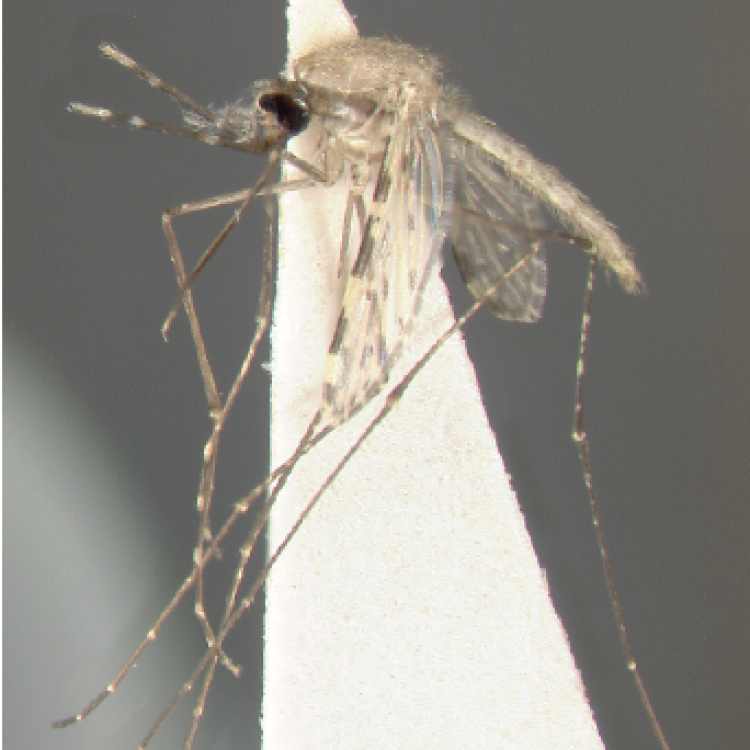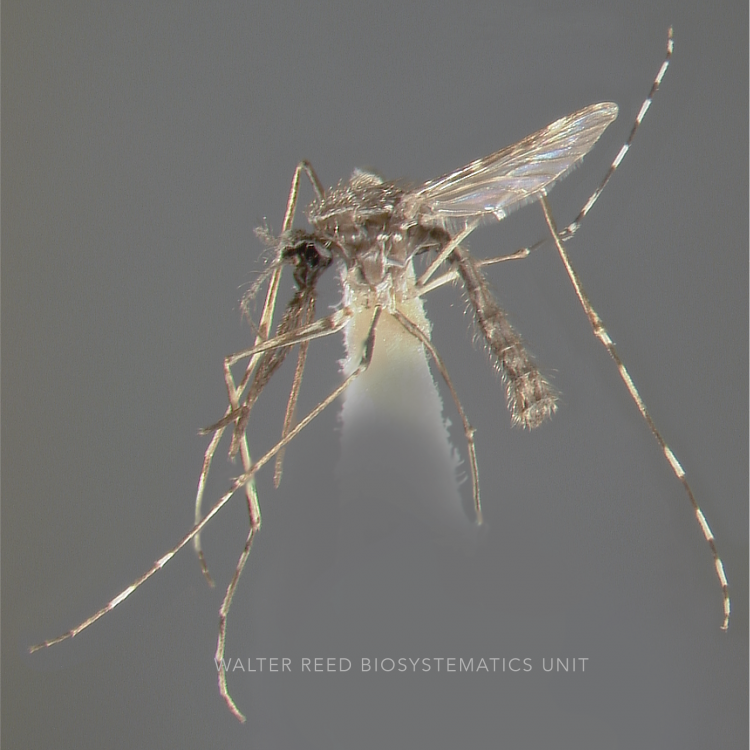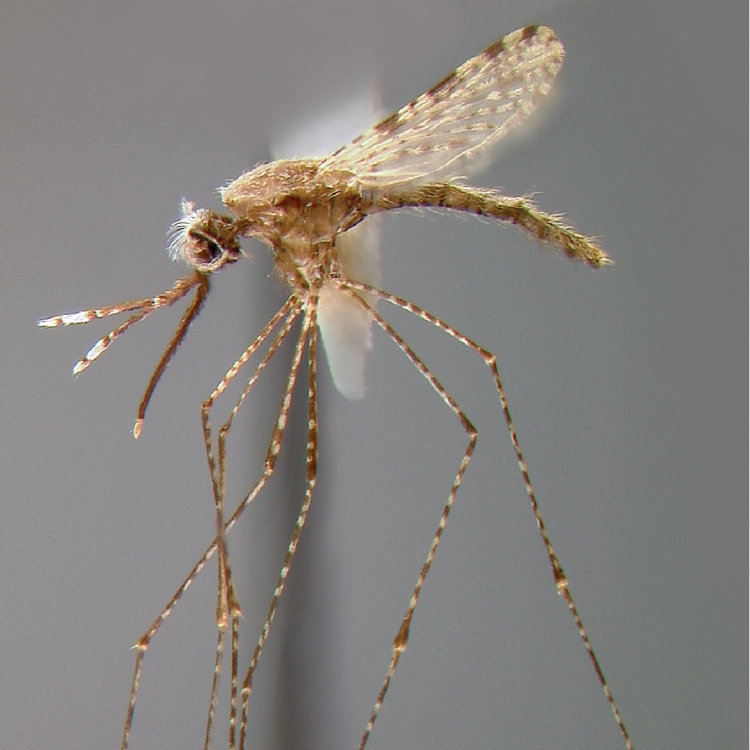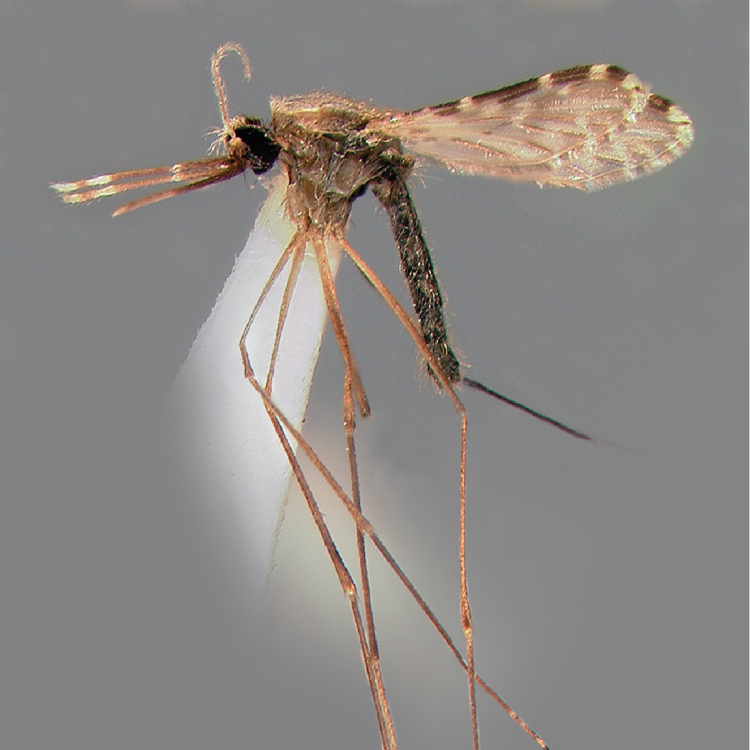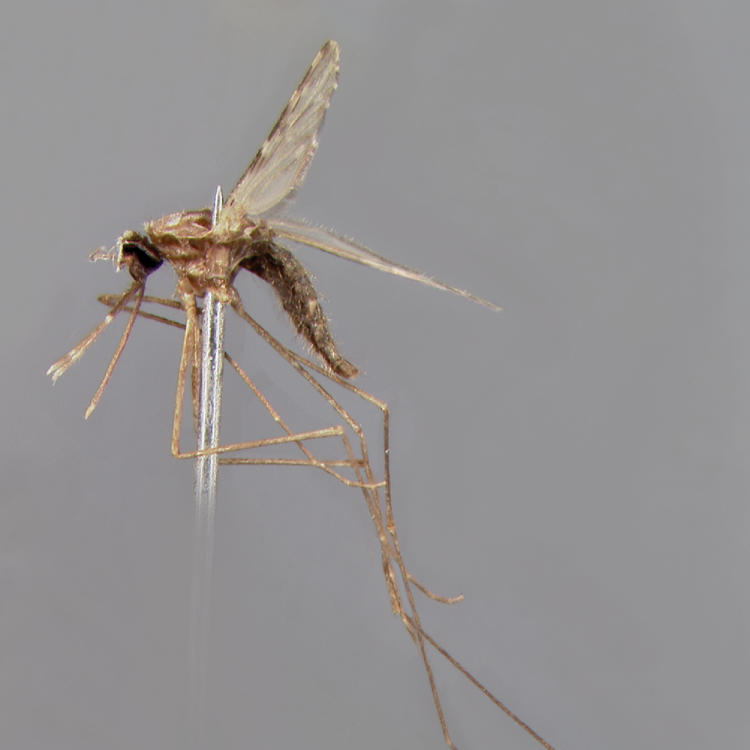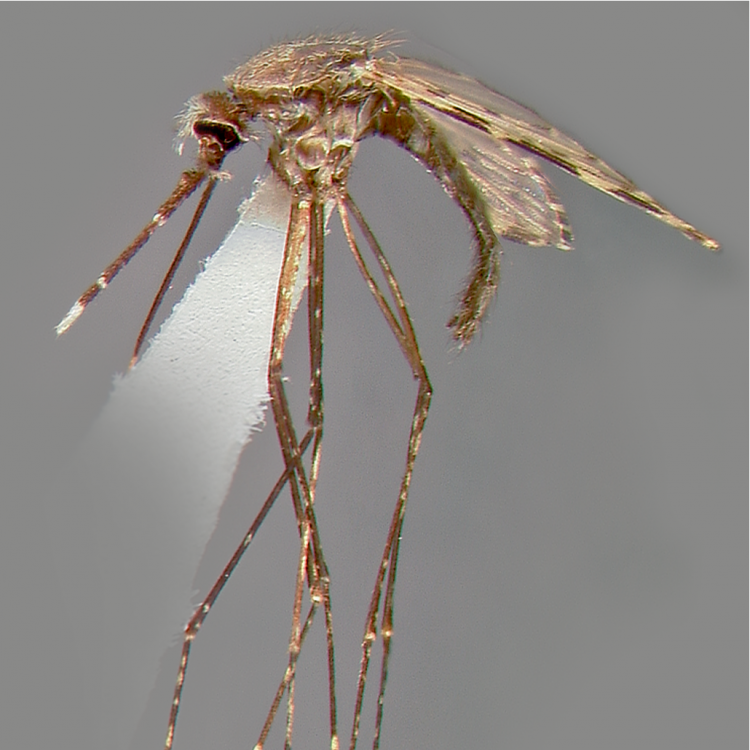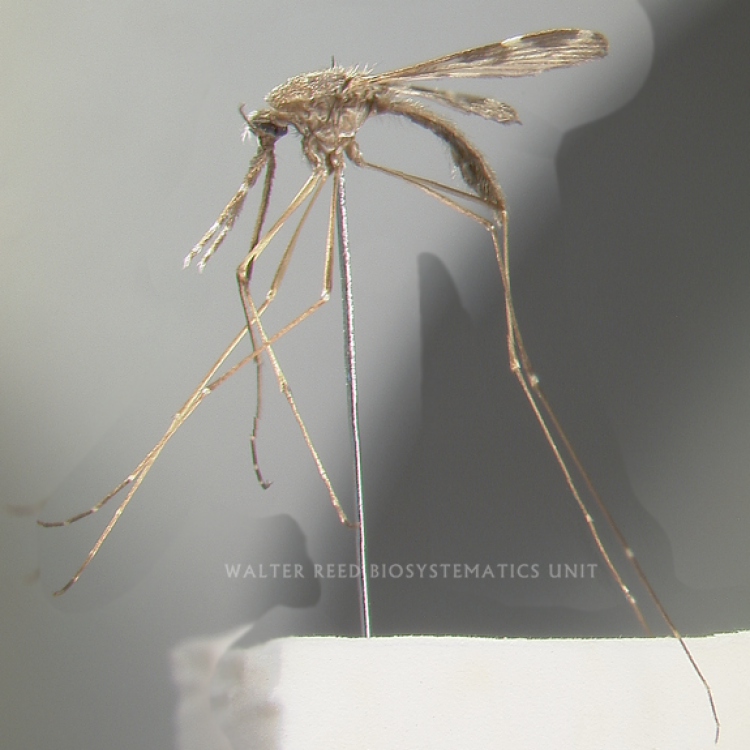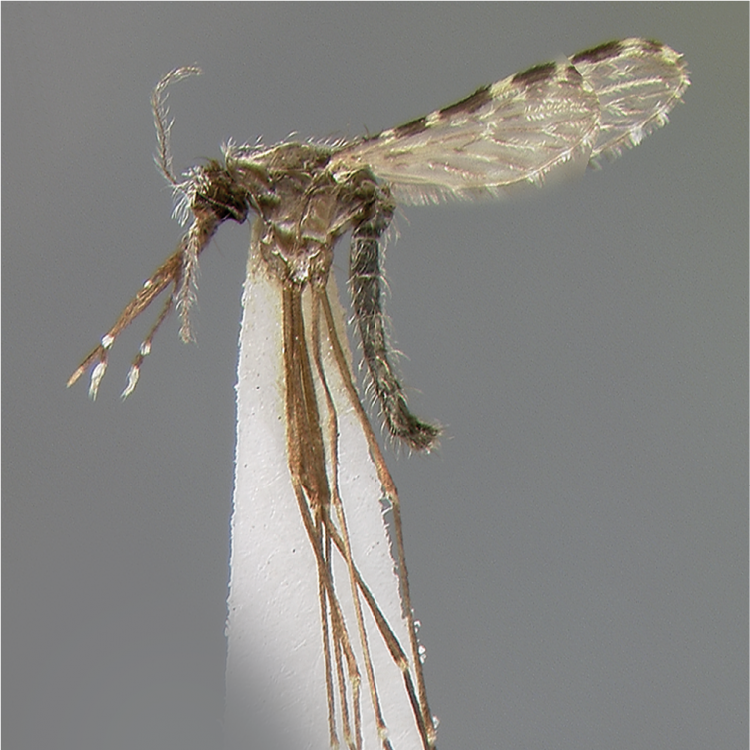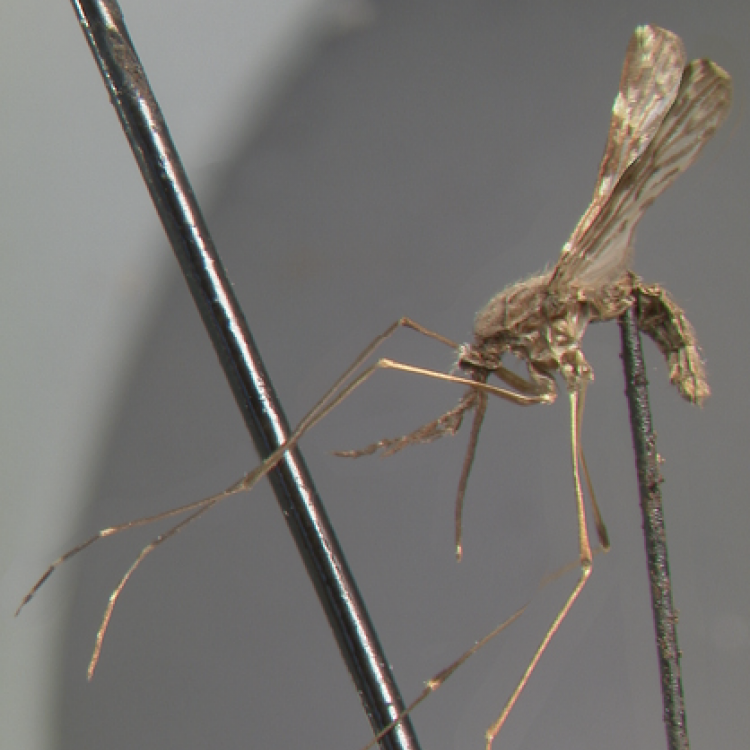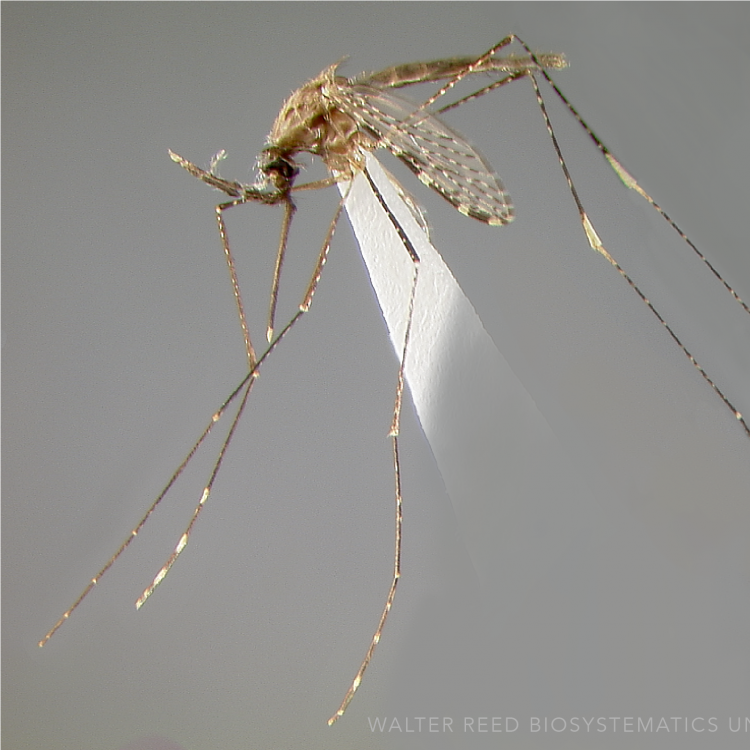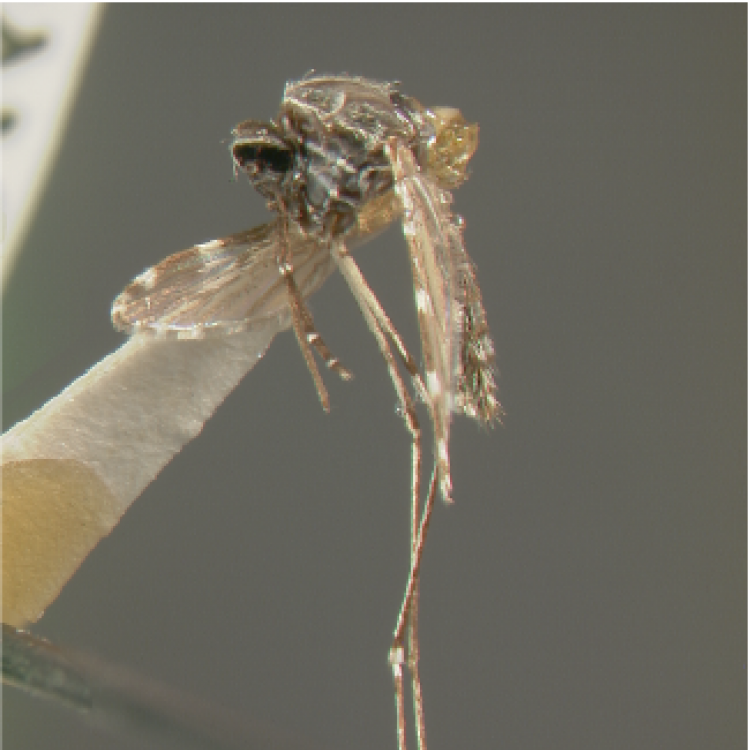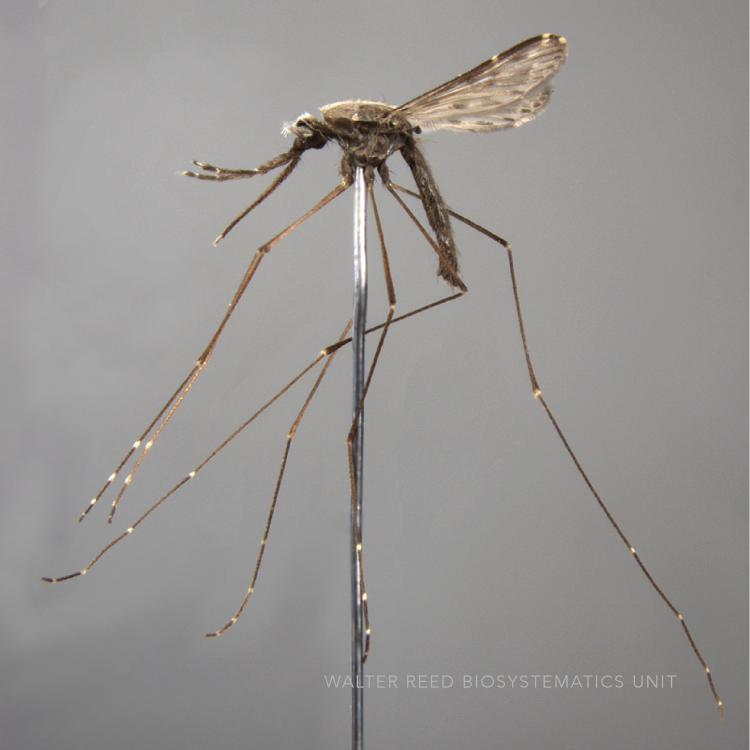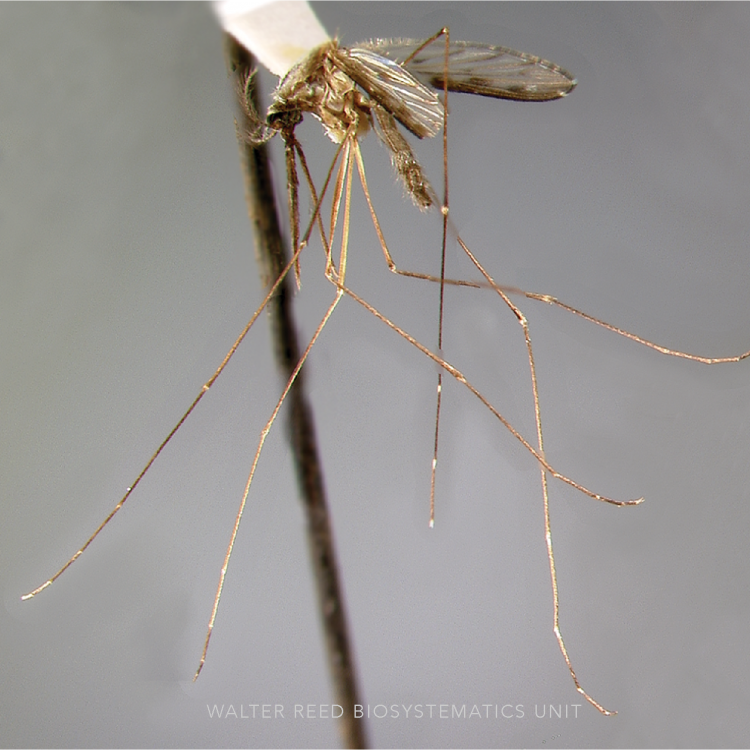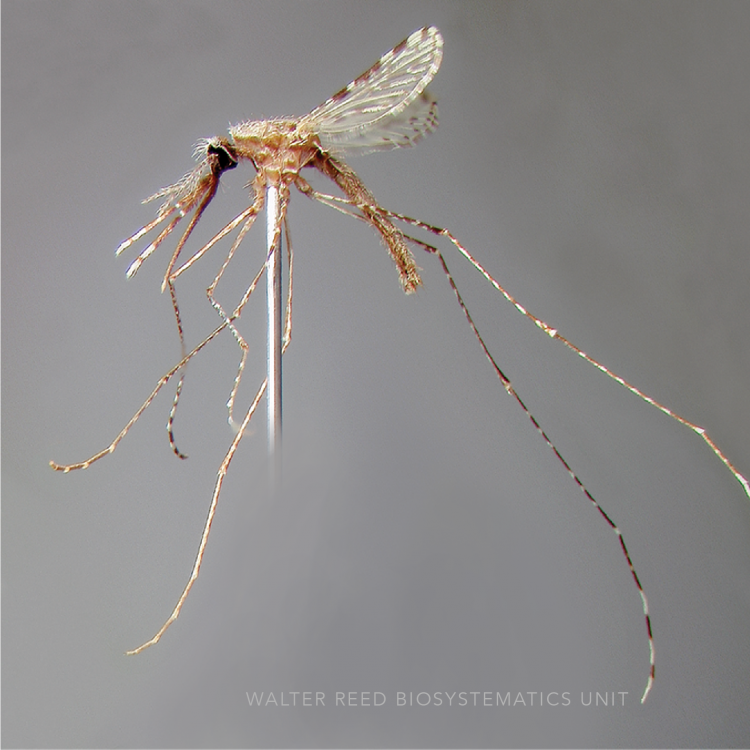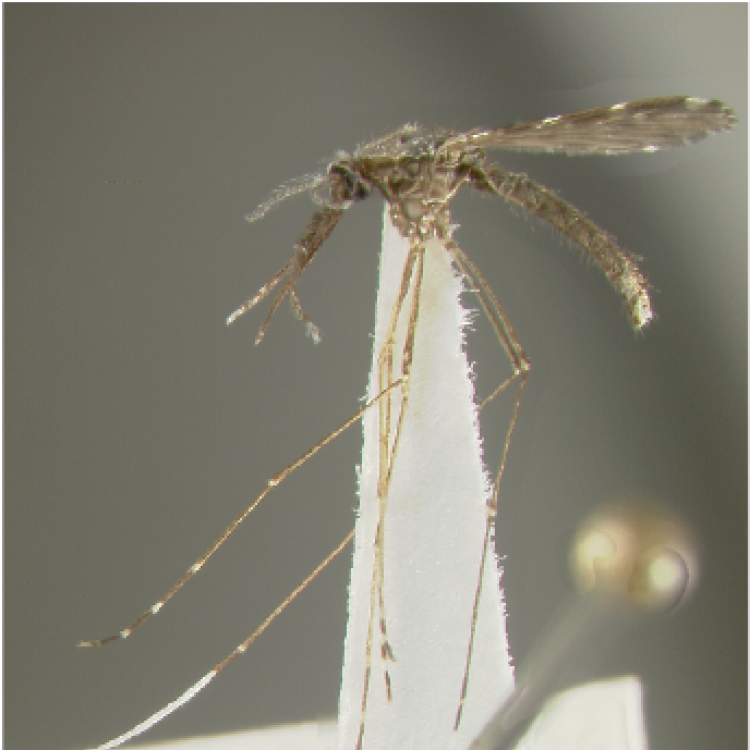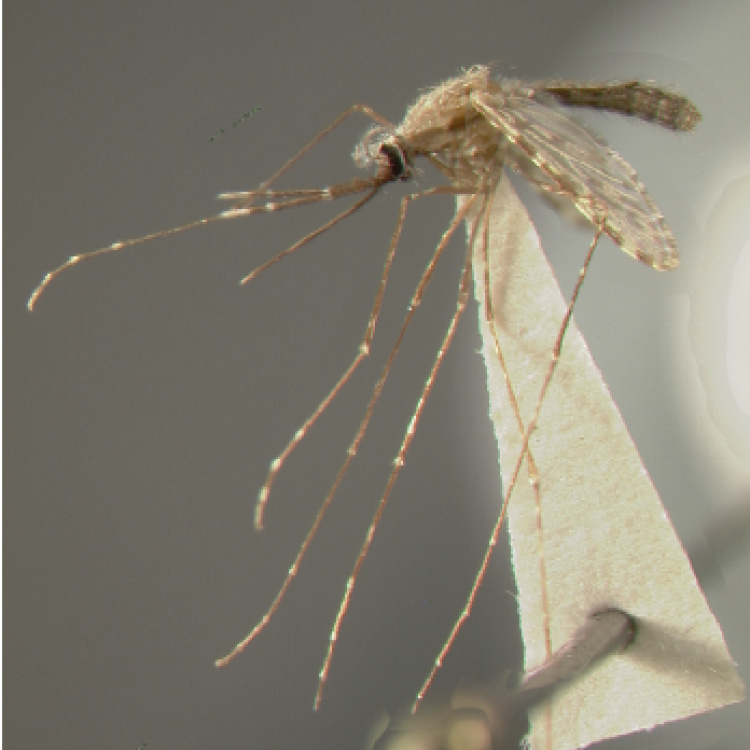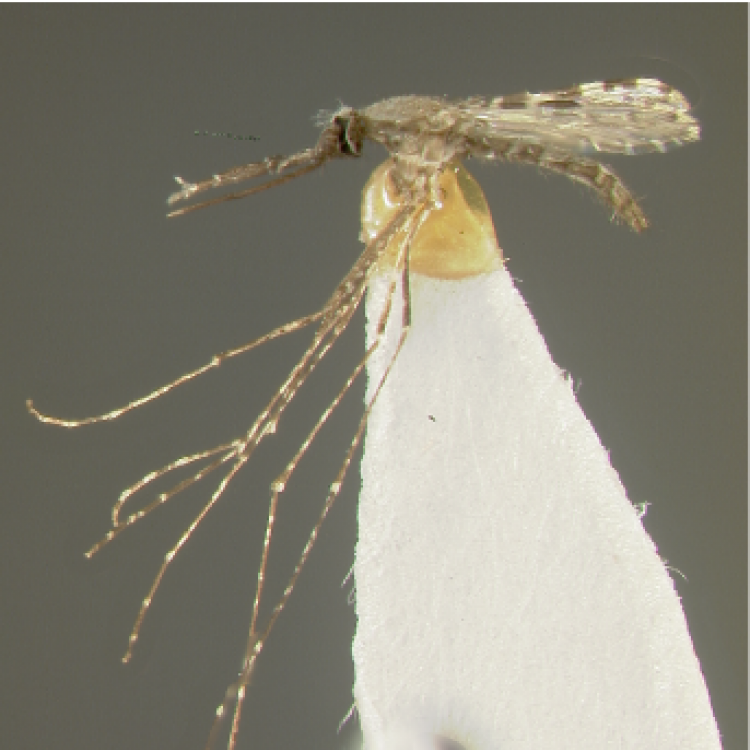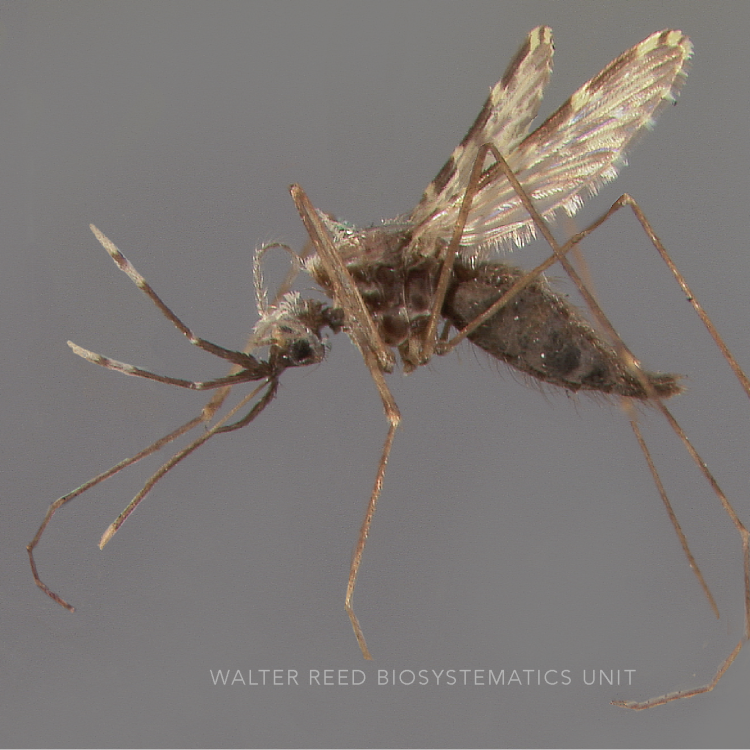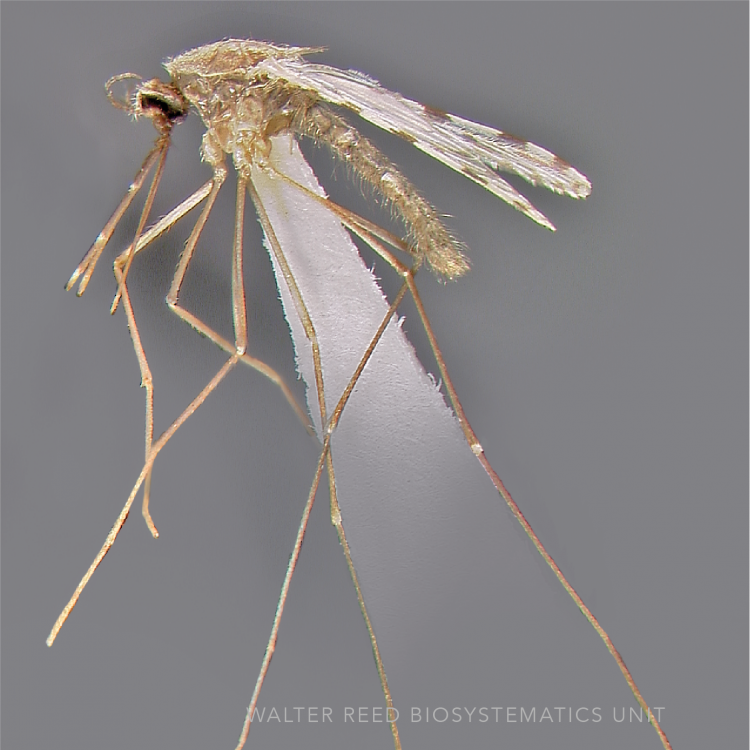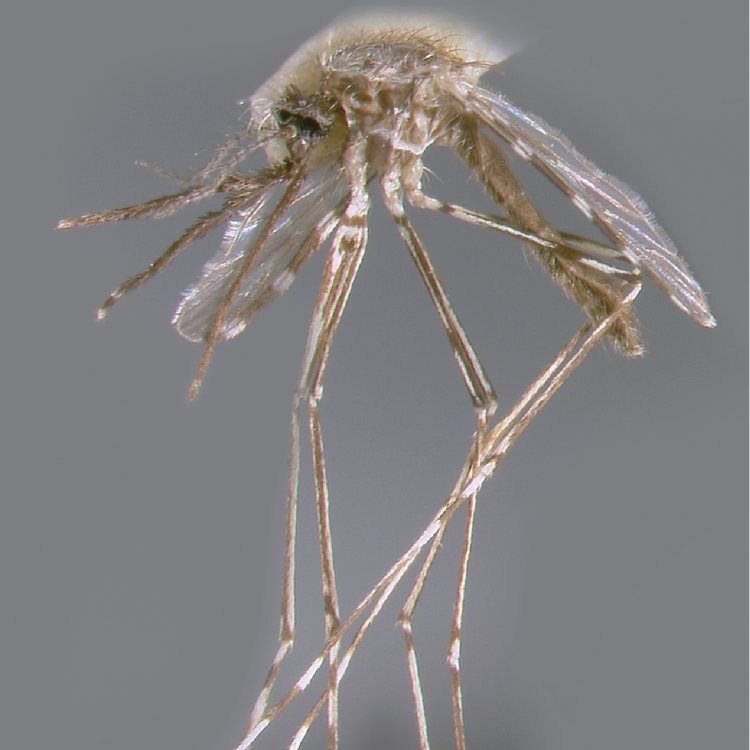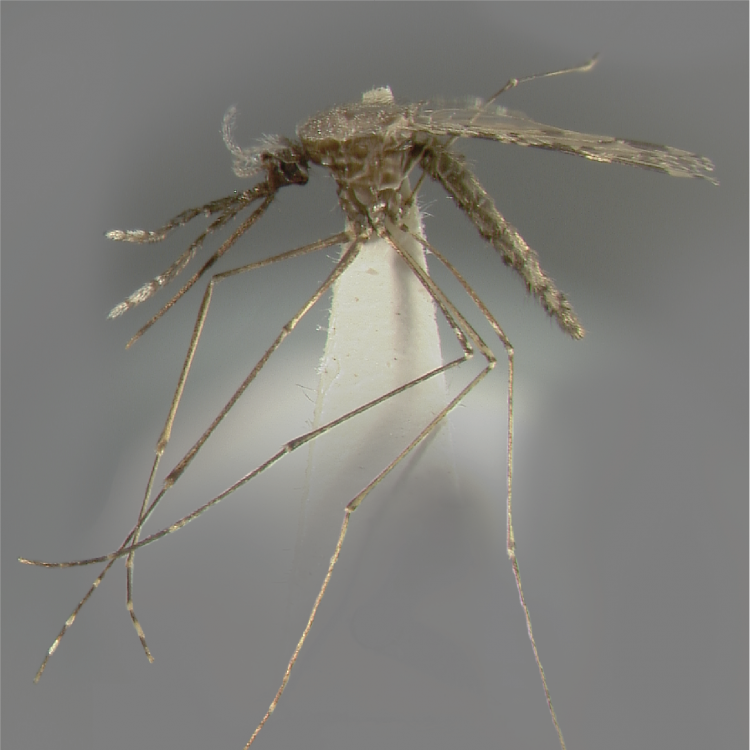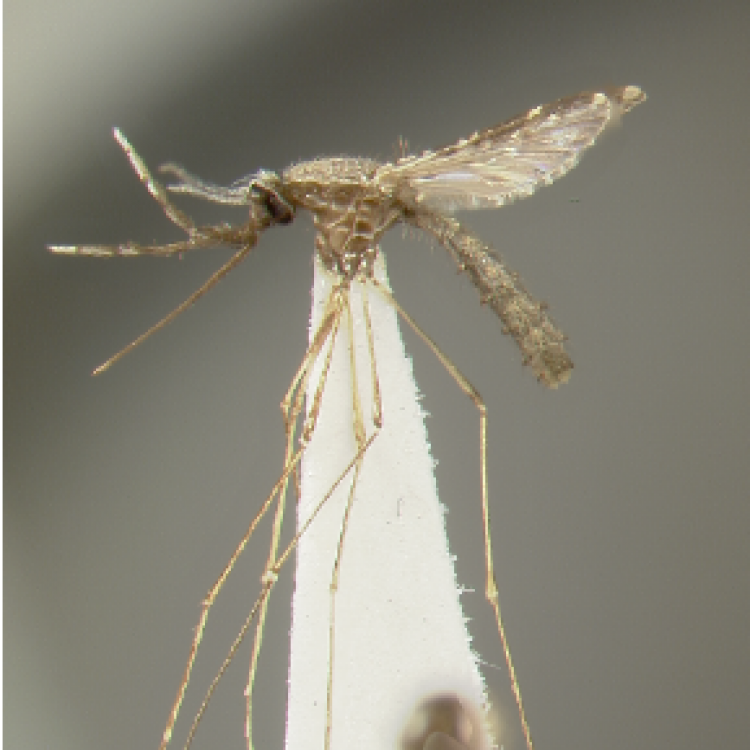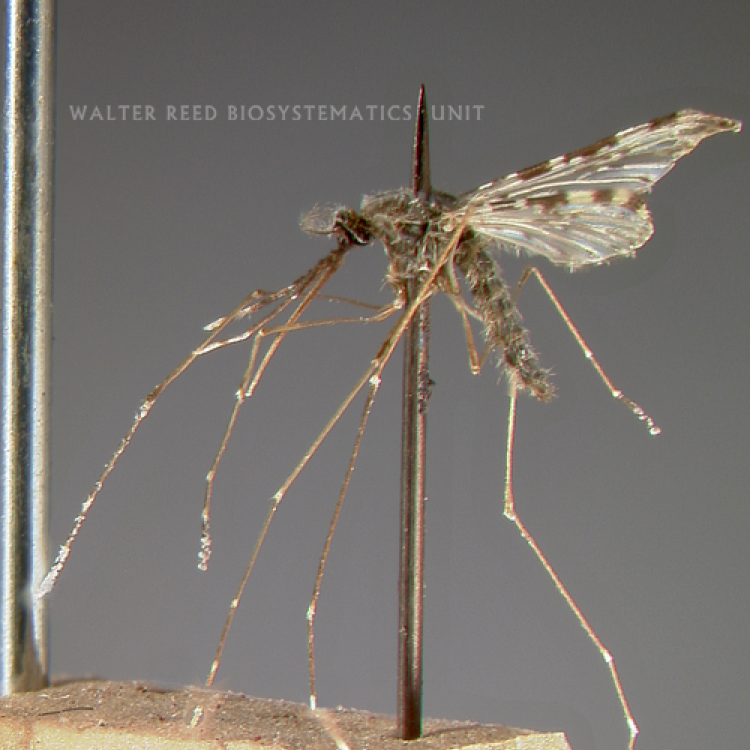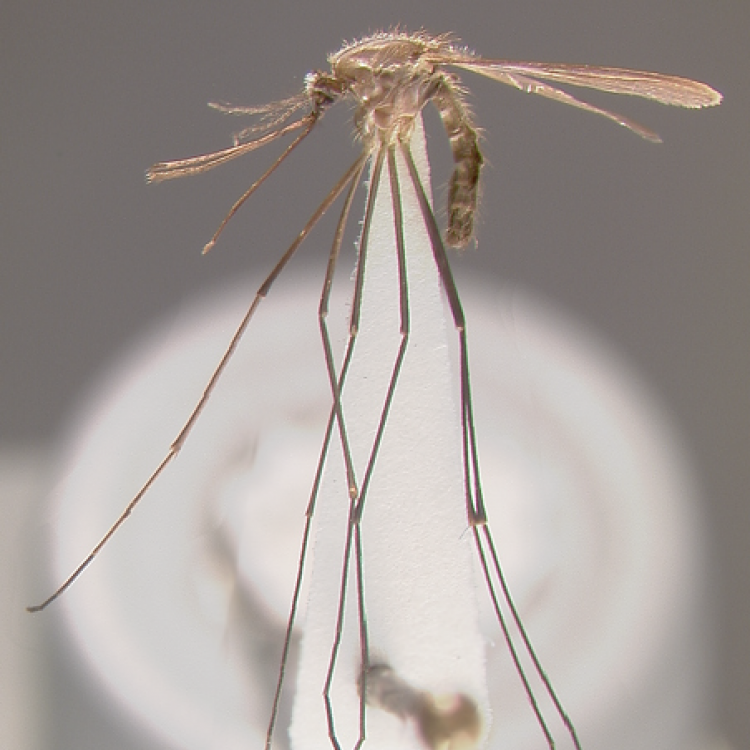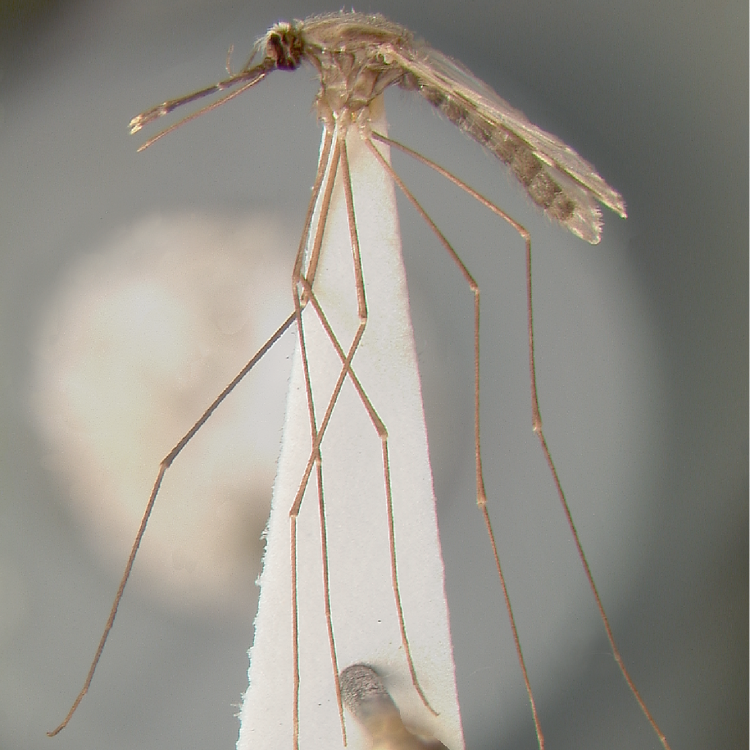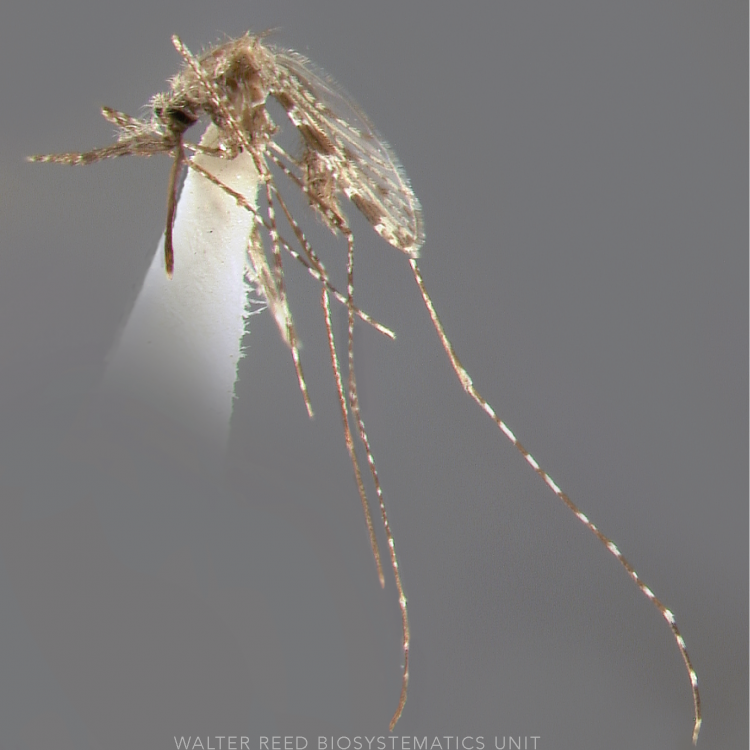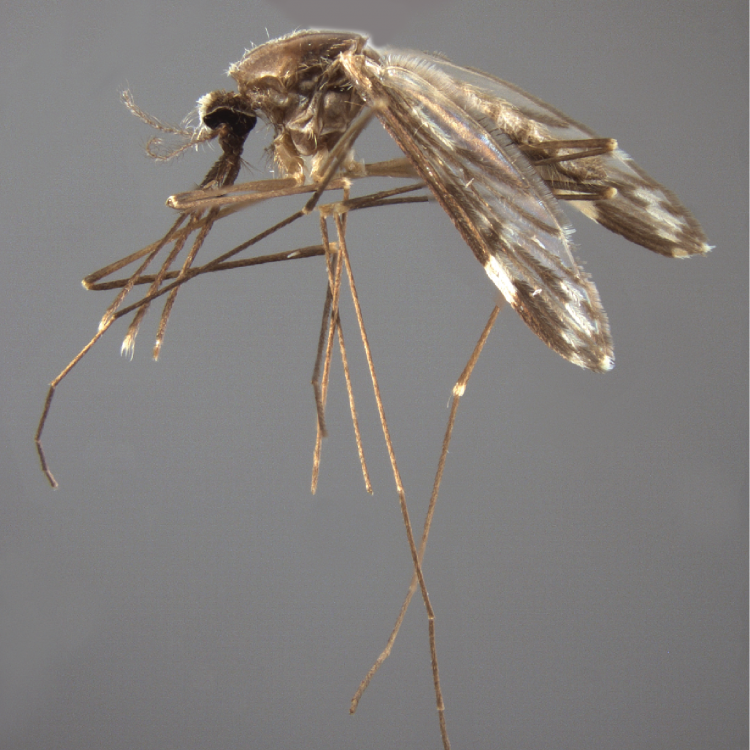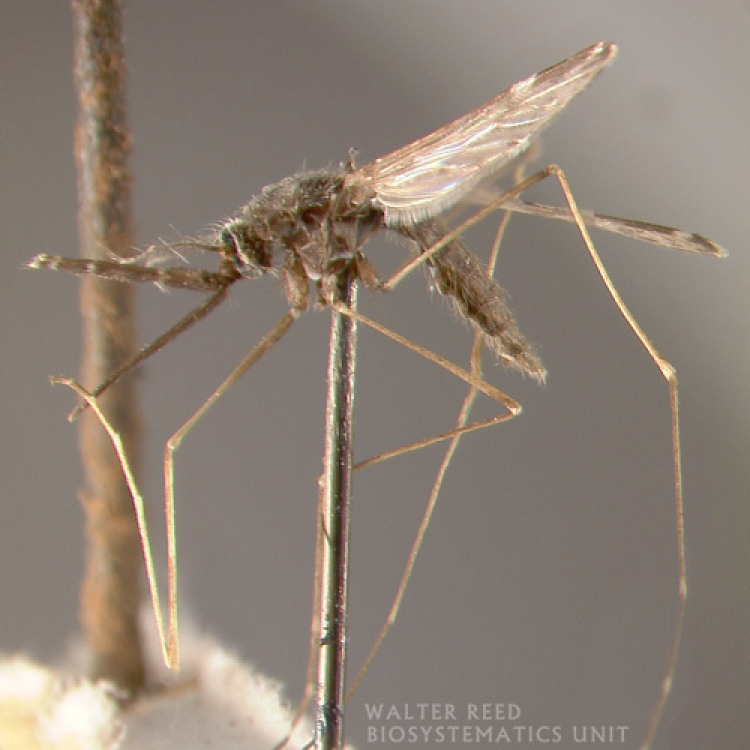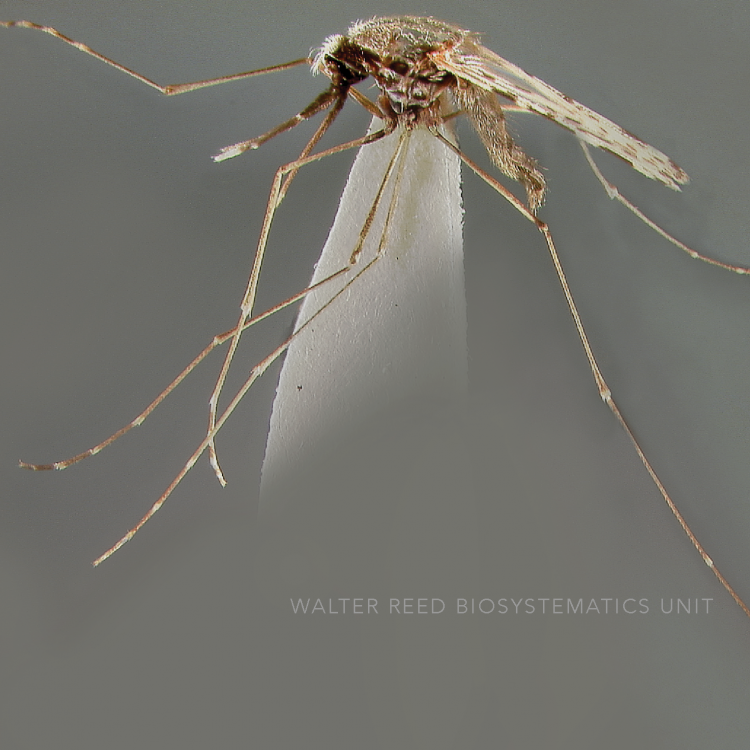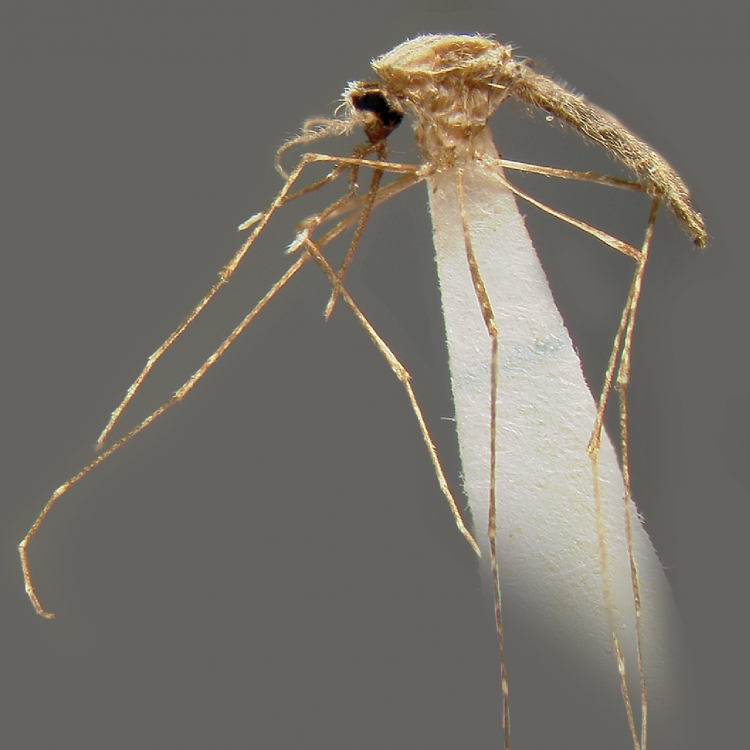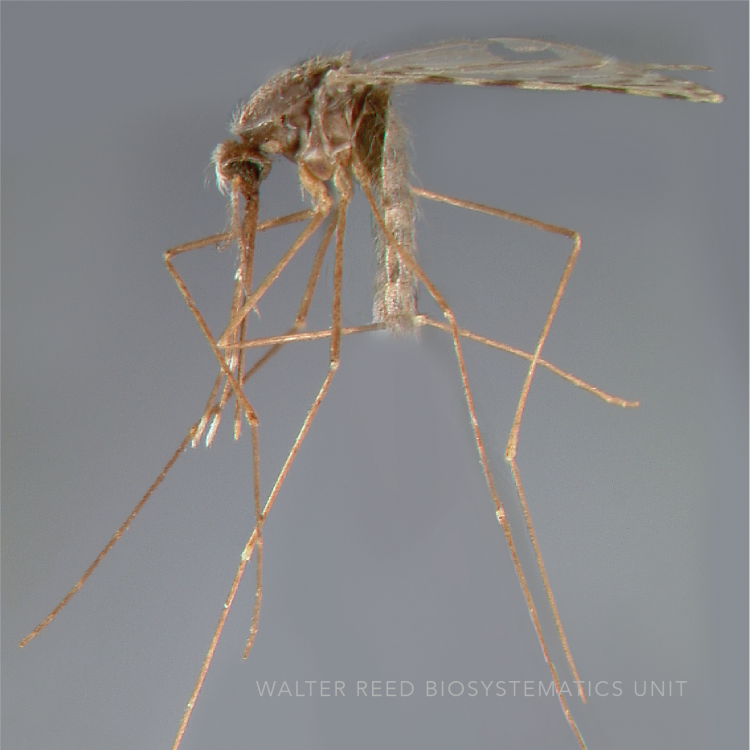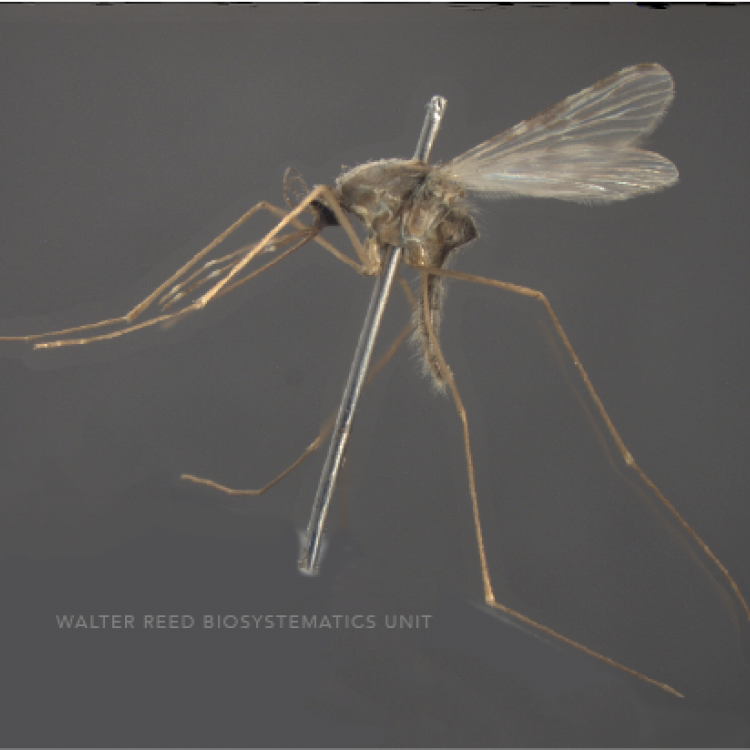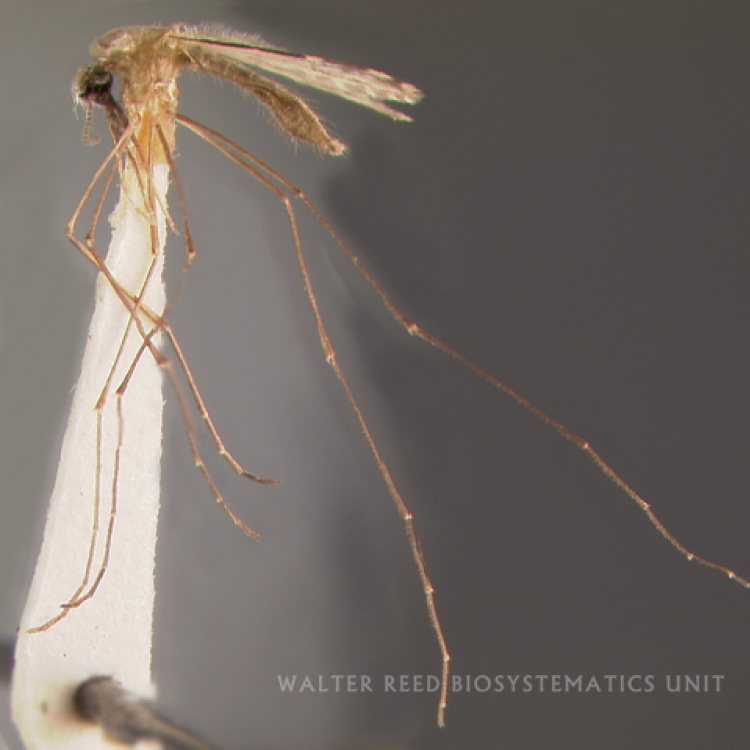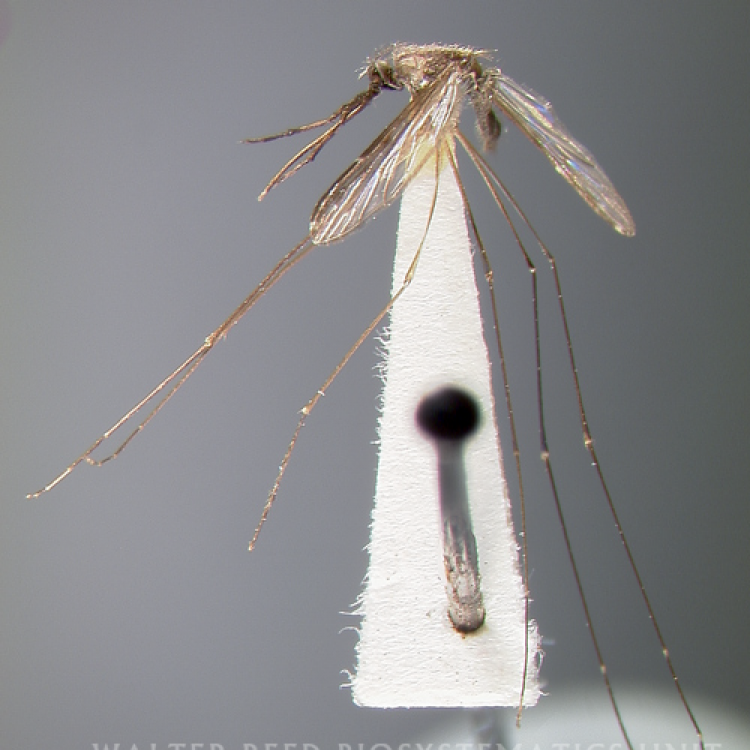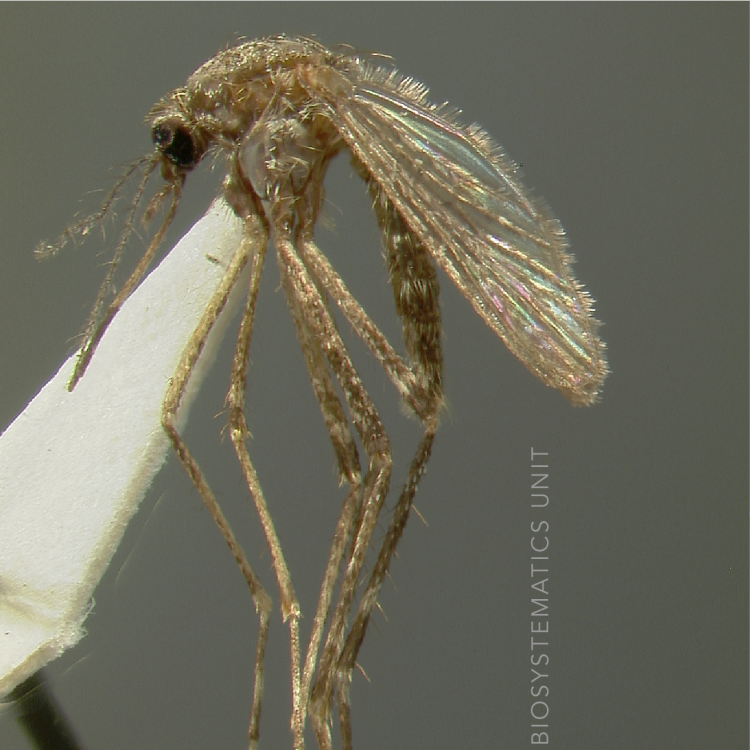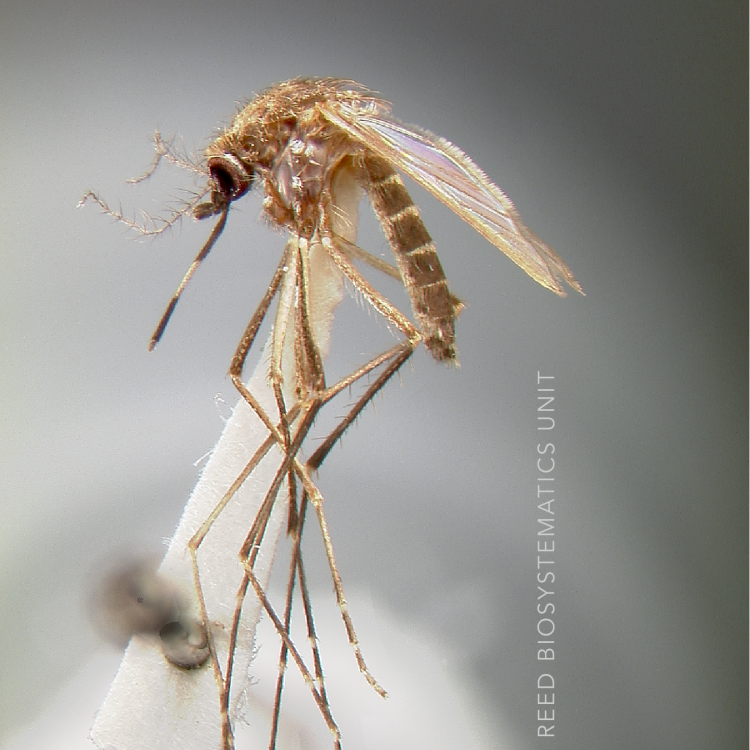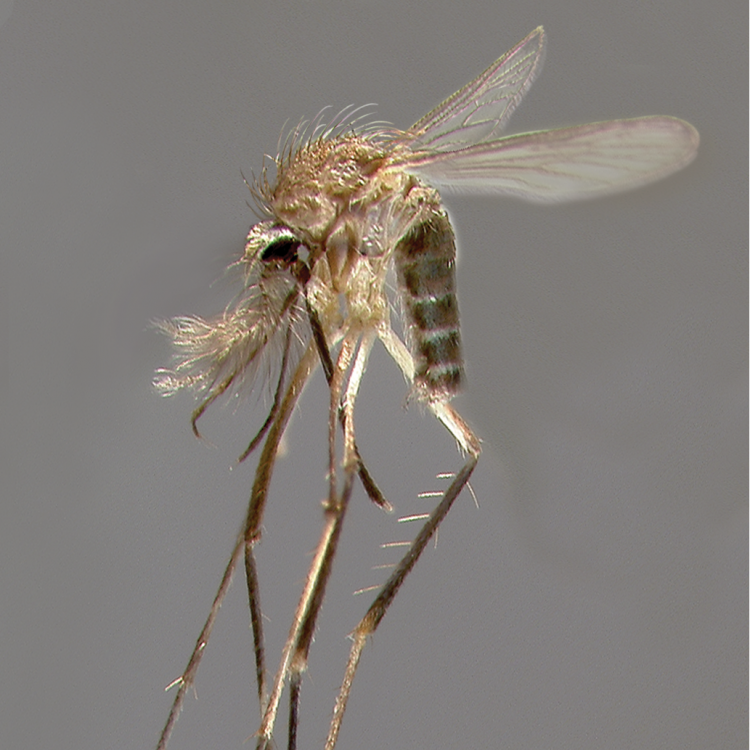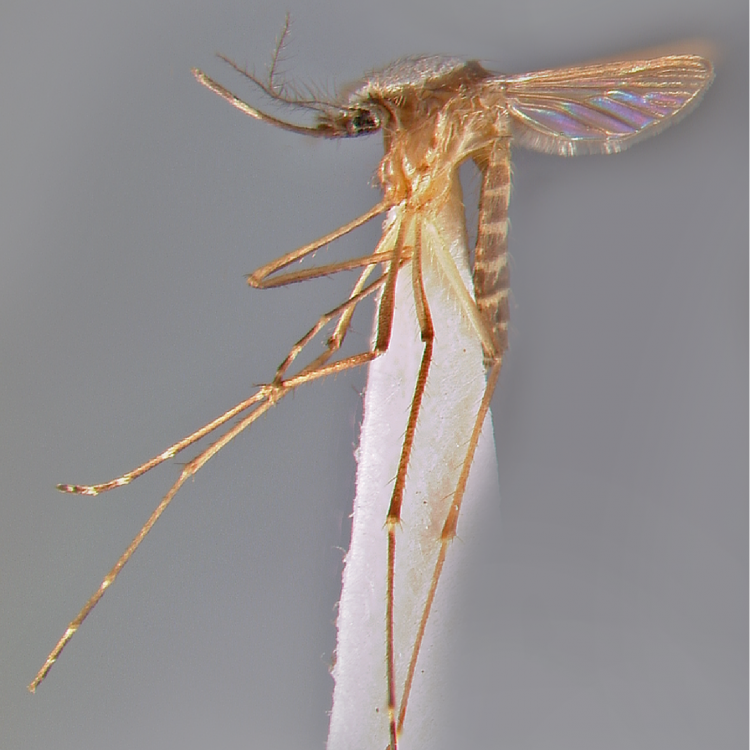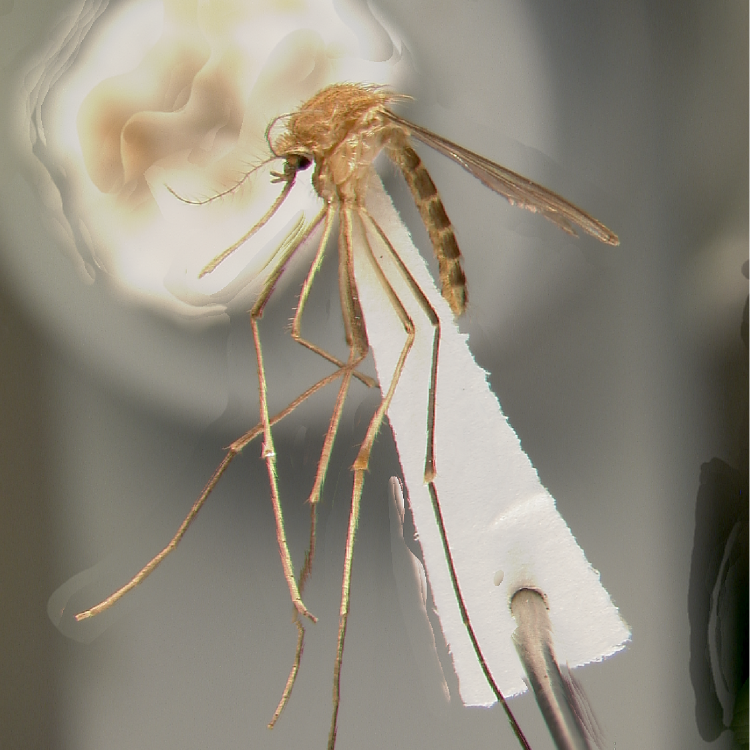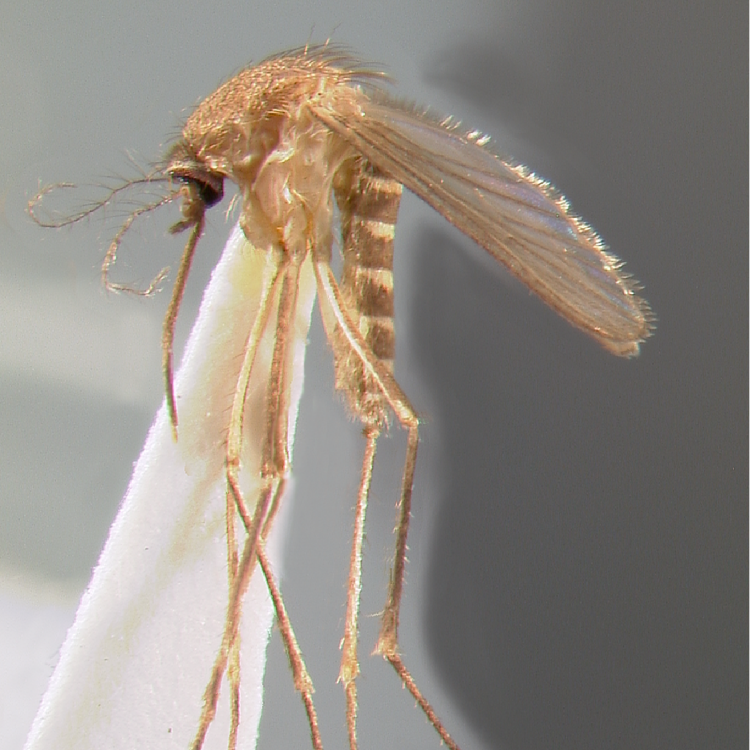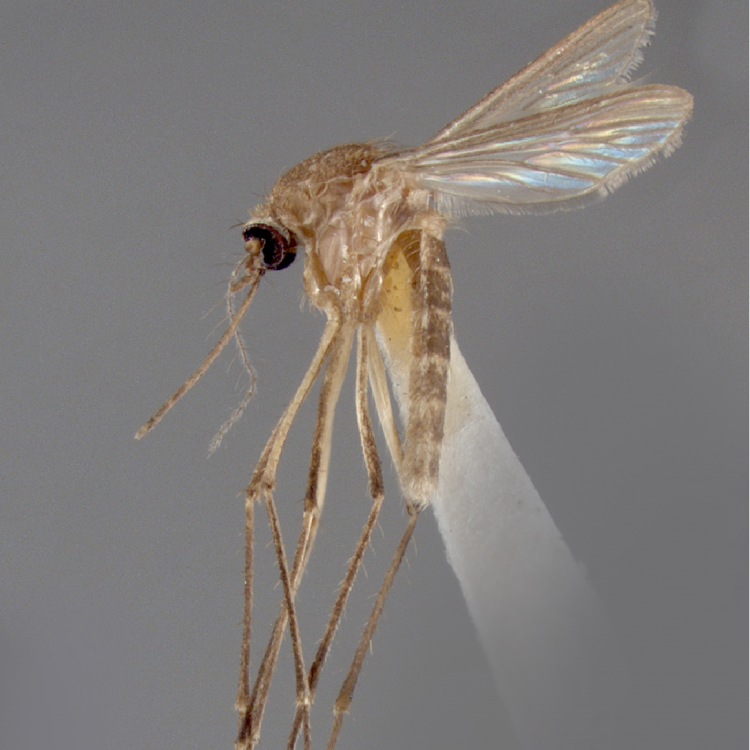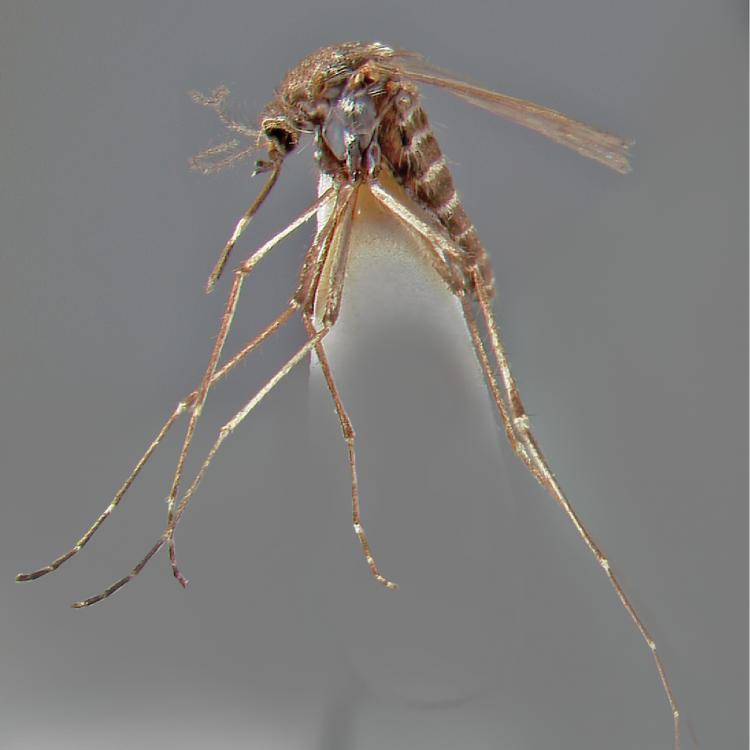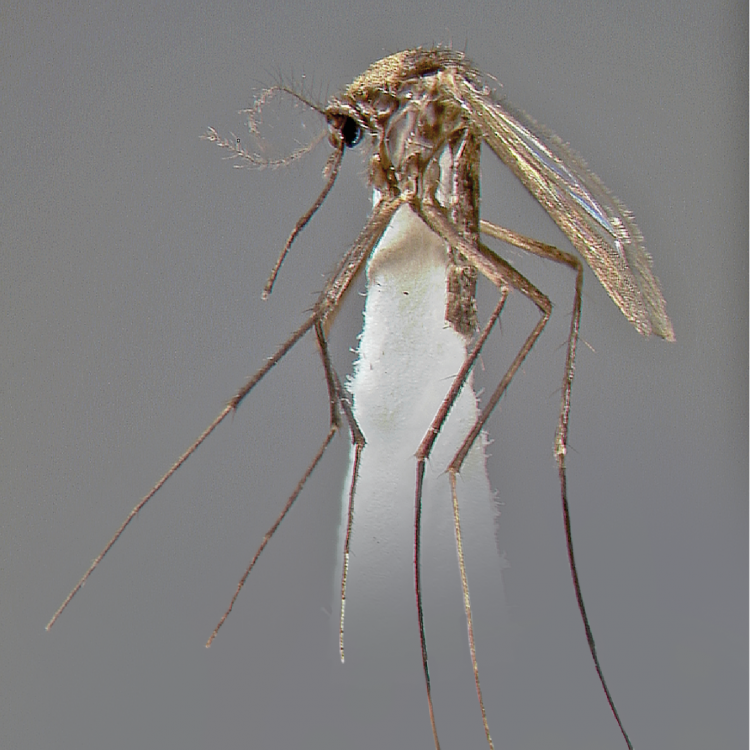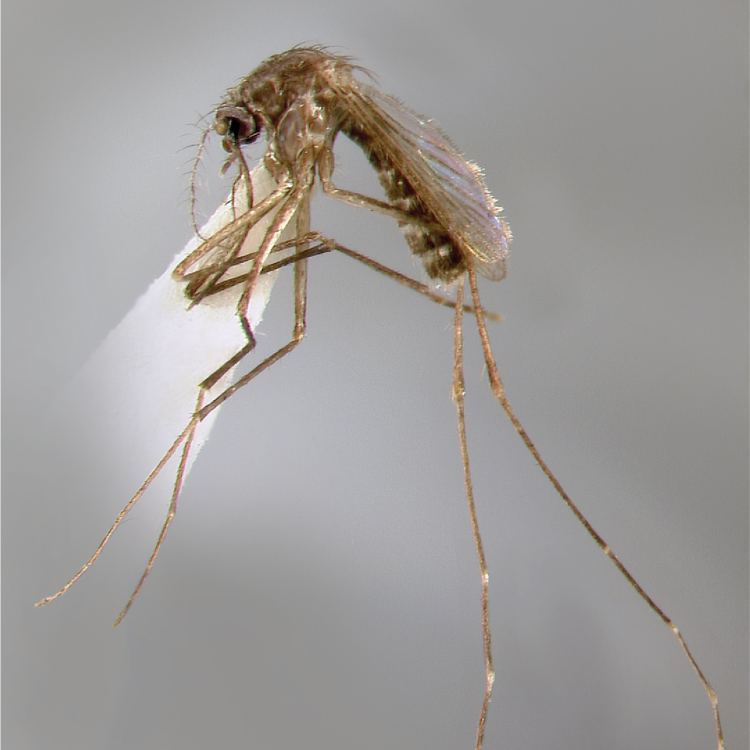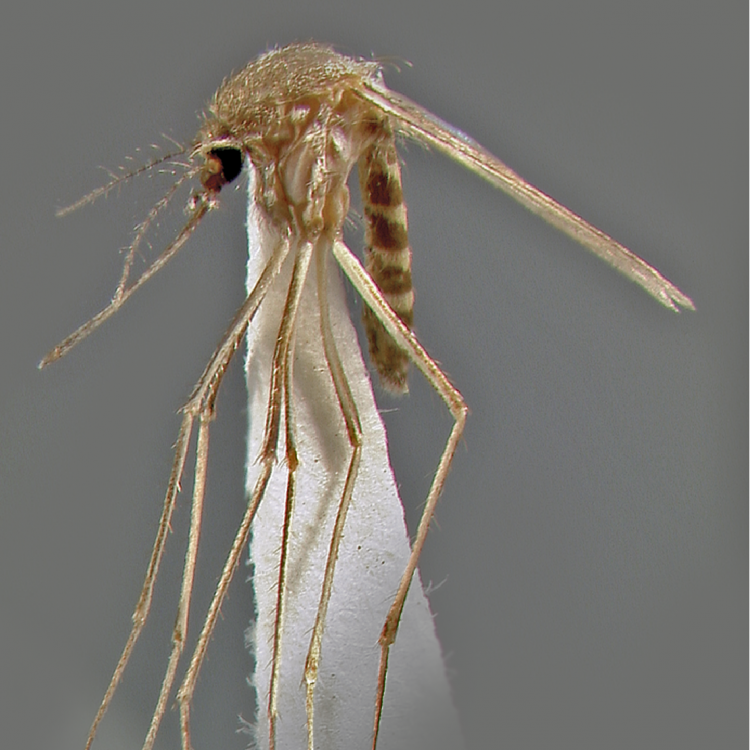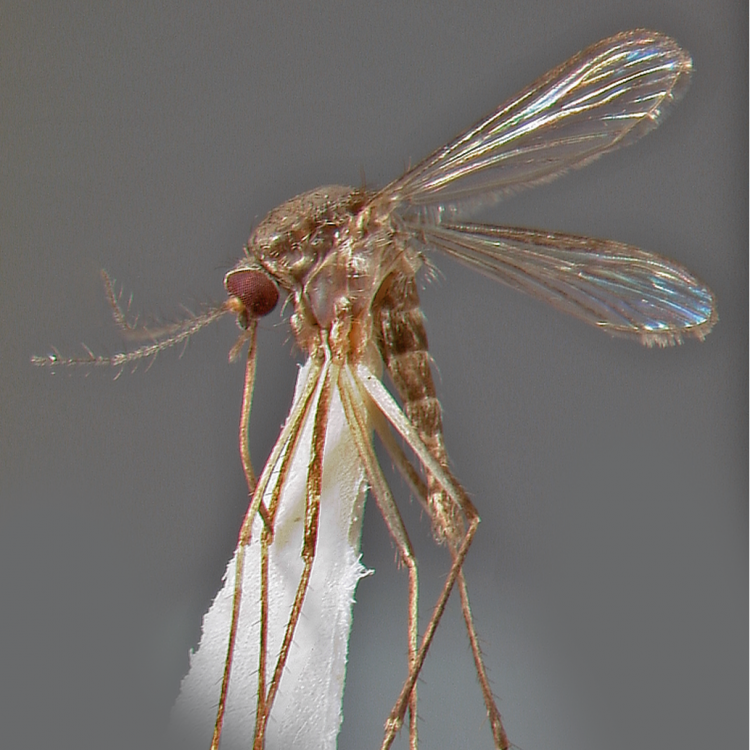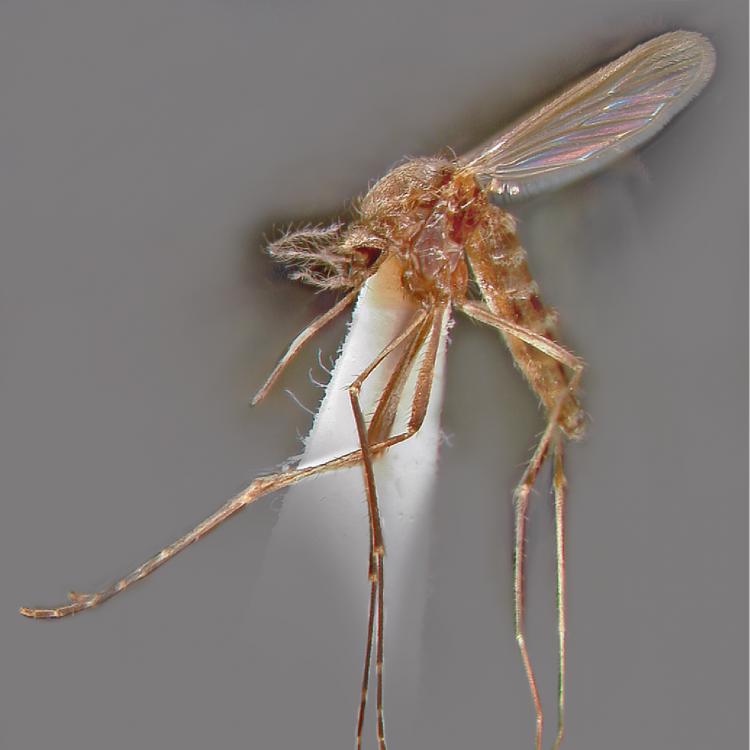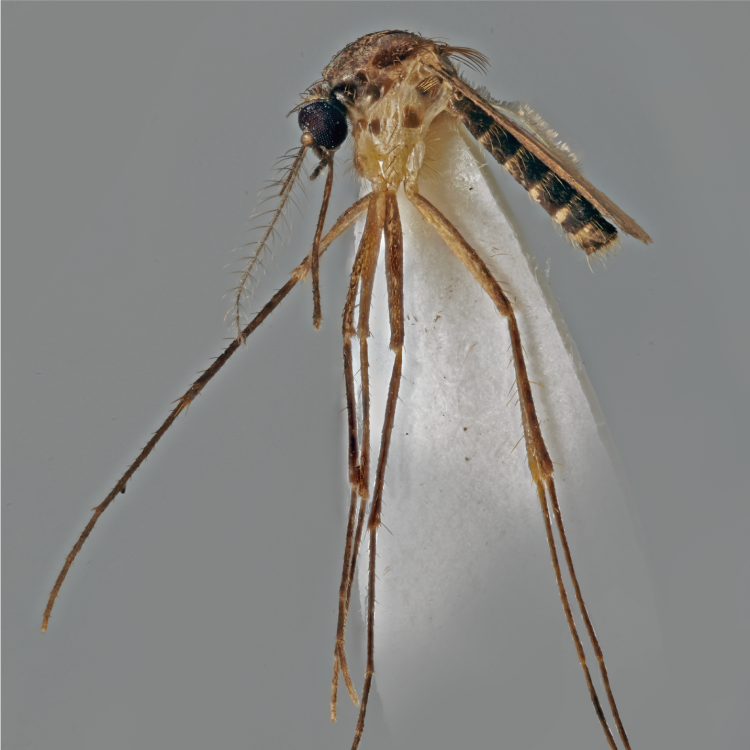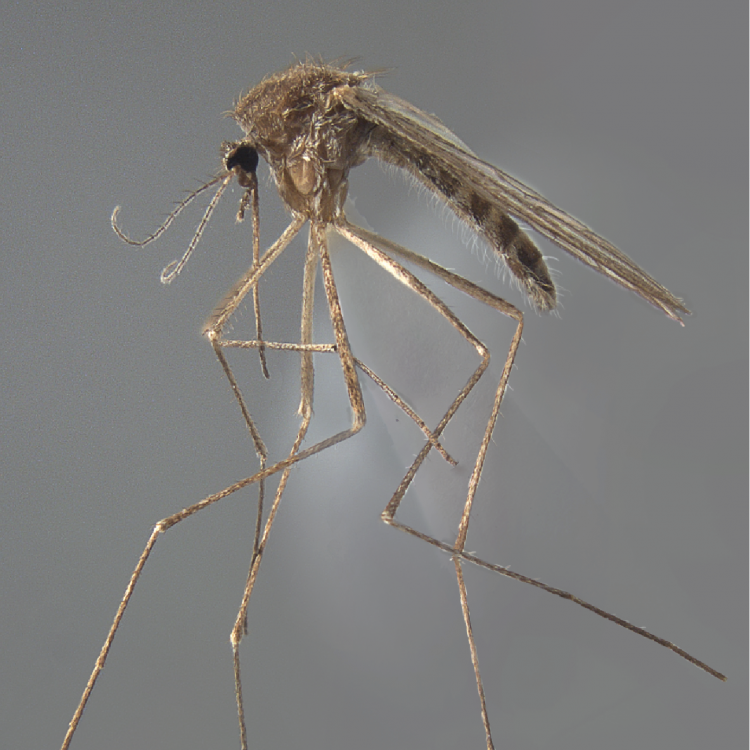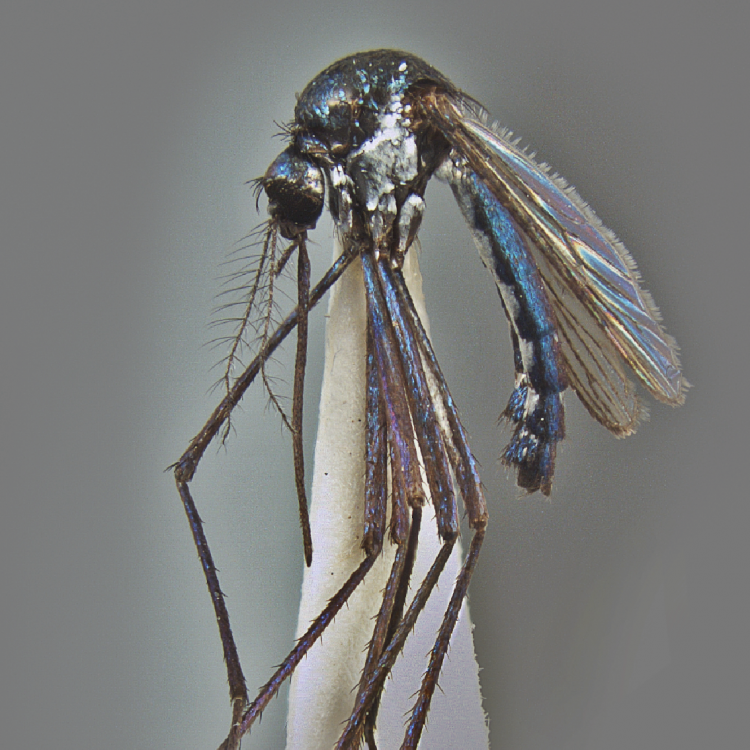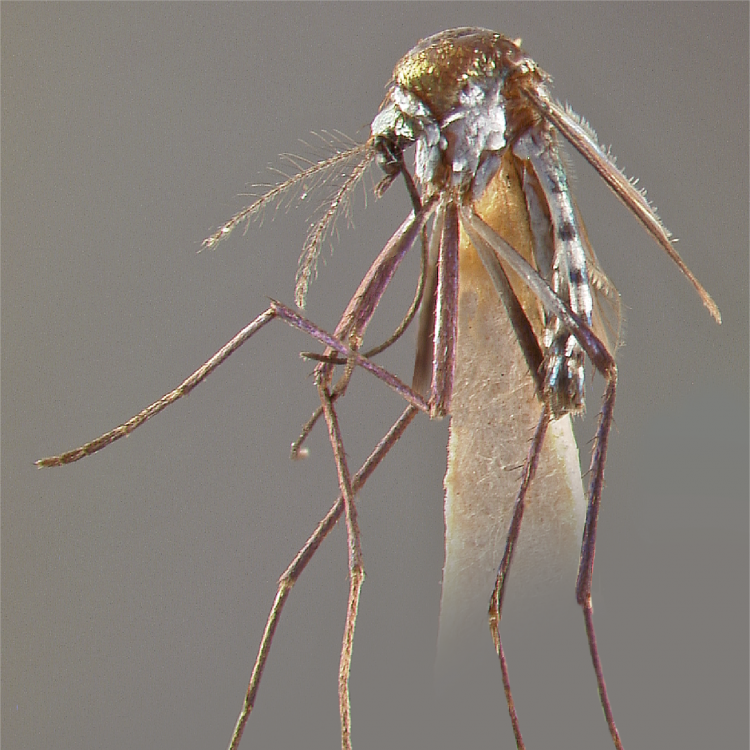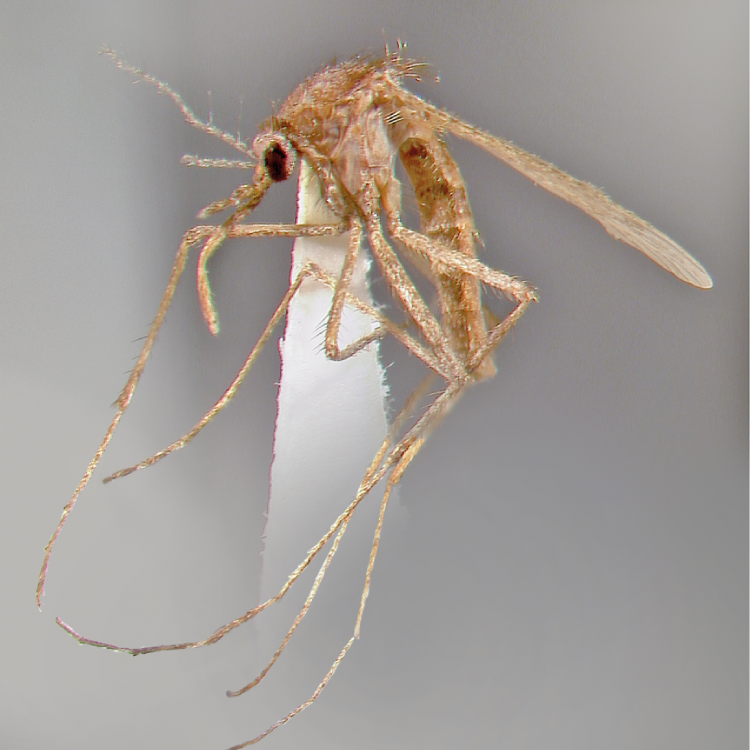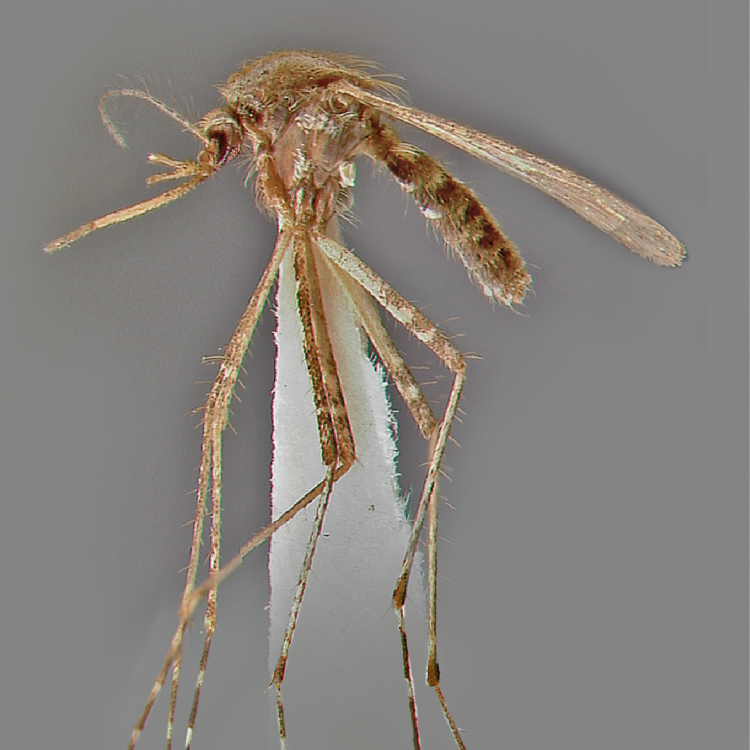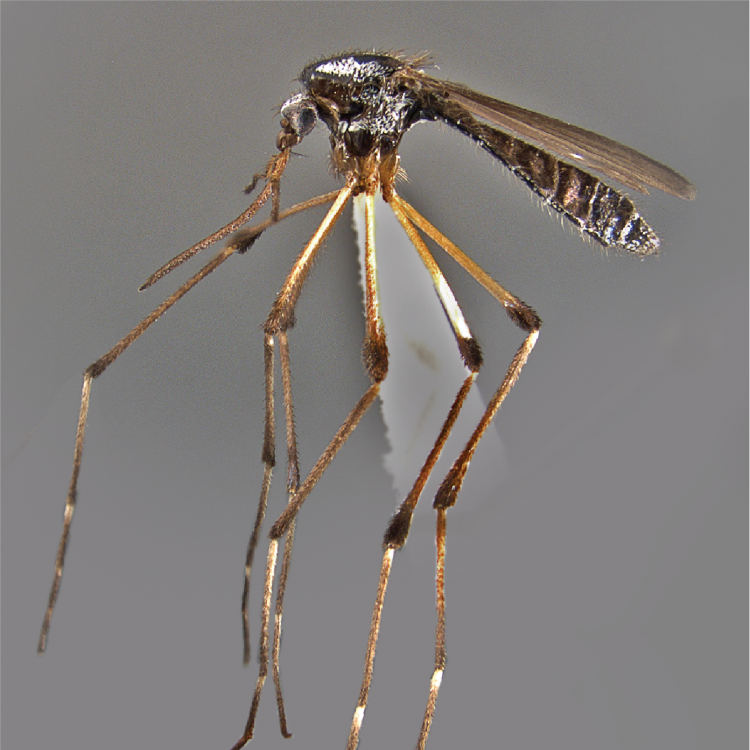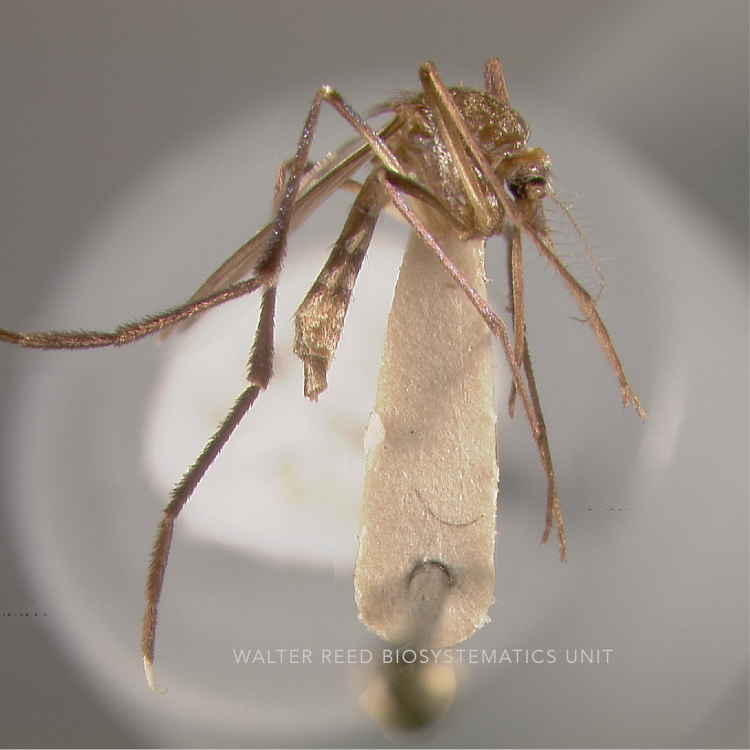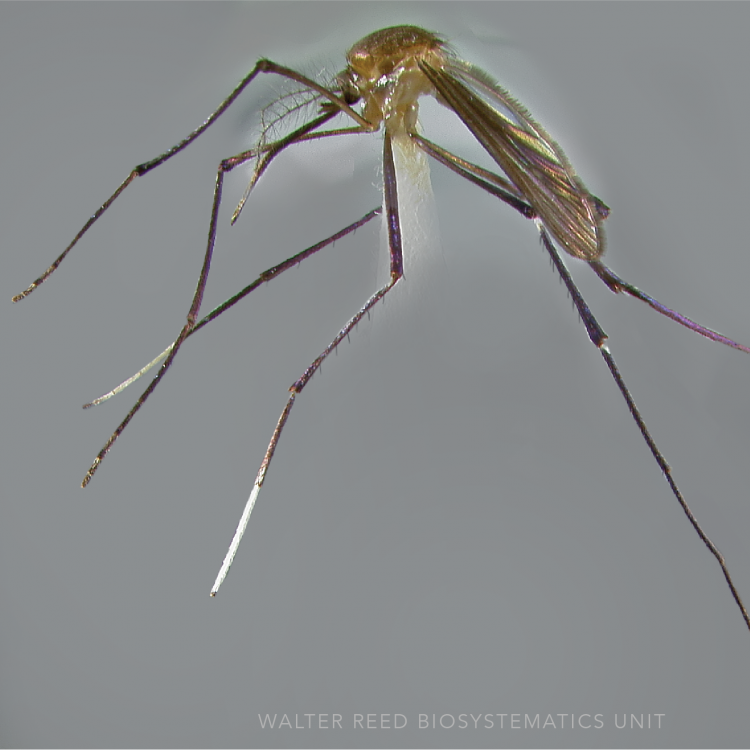NEARCTIC REGION
Etymology: not stated [green wing (Gr)]
Sabethes chloropterus is a stunning mosquito, clothed with a copious covering of gold, green and white scales, and distinctive green wings. Sabethes chloropterus is an acrodendrophile that is present year-round in treetop habitats in dense, humid forest environs across Central and Latin America, including Trinidad and Tobago.
Type locality: Guayaquil River, near Borodan, Ecuador
Type depository: Type non-existent (NE)
DIAGNOSTIC CHARACTERS (Click photos to view; mouse over and click large photo to zoom in.)
ADULT (illustrated): Head: Vertex with violet or bluish scales, not green; proboscis ≤ length of Fe-I. Thorax: Antepronotum large, nearly contiguous dorsally; antepronotal and scutal scales metallic green or bluish, appearing golden in some lights; upper proepisternal setae present; lower mesokatepisternal seta present; prealar setae absent; lower mesokatepisternal seta present; upper mesepimeral setae short, not reaching to middle of mesopostnotum; mesopostnotum large. Abdomen: Abdomen much longer than Fe-III; covered with multi-colored metallic scales; I–VIII-Te scales metallic greenish-blue, violet basally and pale yellow or silvery-white basolaterally; I–VIII-S pale. Legs: Fe-III and Ti-III combined shorter than length of all tarsomeres; Fe-II shorter than Fe-I; Ta-II largely white-scaled ventrally; leg setae not modified into “paddles”.
LARVA (not illustrated): Head: Seta 4-C mesal to 1-C. Abdominal segments: Seta 1-I mesal to seta 2-I. Terminal segments: Comb scales small and close together with fringe of minute spicules, not on a sclerotized plate; siphon long and narrow; seta 1-S 2.5–3.0 x width of siphon; seta 1-X double; seta 4-X 3,4 branched.
TAXONOMIC KEYS
Lane & Cerqueira 1942
Exemplar DNA sequences
Sa. chloropterus whole mitochondrial genome: MF957172
BIONOMICS
Immatures
Sabethes chloropterus are forest-associated species. Females lay rhomboid-shaped eggs in natural containers, particularly those with small openings and large water holding capacity, such as tree rot holes, and insect-bored (not cut) standing bamboo. Females hover in front of the holes, shooting only one or two eggs into each highly protected habitat. Larvae are both predaceous and cannibalistic, sucking the body contents of their prey through puncture holes they create in the cuticle.
Adults
Mate-seeking Sa. chloropterus females perch on vertical surfaces waiting for patrolling males. Males perform elaborate courtship rituals lasting up to 34 minutes and involving highly-regimented oscillations of the midleg before copulation occurs. Adults feed on monkeys high in the canopy, but also feed readily on humans at ground level. On man, Sa. chloropterus always bite humans high on the body, favoring the nose and lips. Feeding occurs exclusively during the day, peaking in the early afternoon (14:00–15:00).
DISTRIBUTION NOTES
Argentina, Belize, Bolivia, Brazil, Colombia, Costa Rica, Ecuador, El Salvador, French Guiana, Guatemala, Guyana, Honduras, Mexico, Nicaragua, Panama, Peru, Suriname, Trinidad & Tobago, Venezuela.

WRBU VECTOR HAZARD REPORTS
None; View other WRBU Vector Hazard Reports
Available GIS Models
Sa_chloropterus_Nyari_1 South & Central America
IMPORTANT REFERENCES (full citations below)
von Humboldt 1819: 340 (A; Culex)
Anduze 1941b: 825 (F; as imperfectus)
Lane & Cerqueira 1942: 675 (F; taxonomy, keys, bionomics, distribution)
Lane 1953: 1076 (M*, F, L)
Leví-Castillo 1953f: 96 (M*, F, P*, L*)
Lane & Causey 1955: 17 (M, P*, L)
Galindo 1957a (behavior)
Galindo 1958: 429 (bionomics)
Belkin 1968b: 30 (type information)
Harbach 1991c (L*, all instars; morphology, ontogeny)
Navarro & Machado-Allison 1995 (bionomics)
Judd 1996 (M, F, P, L; phylogenetics)
Zsemlye et al. 2005 (behavior)
CURRENT SYNONYMS
syn. confusus Theobald
1903a: 328 (F*; Sabethoides). Type locality: Brazil (NHMUK). References: Mattingly 1958c: 105 (type information).
syn. rangeli Surcouf & Gonzales-Rincones
1911: 251 (F*; Sabethoides). Type locality: Maturin, Monagas, Venezuela (MNHP).
syn. imperfectus Bonne-Wepster & Bonne
1920 (1919): 165 (F; Sabethoides). Type locality: Surinam (ITH). References: Lane 1951 (syn.); Belkin 1968b: 30 (type information).
CITED REFERENCES
Anduze, P.J. (1941b). Primer informe sôbre entomologica médica del estado Bolivar (Venezuela). Serie 1. La fauna culicidiana. Descripción de tres espécies nuevas. Revista de Sanidad y Asistencia Social (Venezolana), 6, 812–839.
Belkin, J.N. (1968b). Mosquito studies (Diptera, Culicidae). IX. The type specimens of New World mosquitoes in European museums. Contributions of the American Entomological Institute, 3(4), 1–69.
Bonne-Wepster, J., & Bonne, C. (1920). Diagnoses of new mosquitoes from Surinam, with a note on synonymy (Diptera, Culicidae). Insecutor Inscitiae Menstruus, 7(1919), 165–180.
Galindo, P. (1957a). A note on the oviposition behavior of Sabethes (Sabethoides) chloropterus Humboldt. Proceedings of the Entomological Society of Washington, 59(6), 287–288.
Galindo, P. (1958). Bionomics of Sabethes chloropterus Humboldt, a vector of sylvan yellow fever in Middle America. The American Journal of Tropical Medicine and Hygiene, 7(4), 429–440.
Harbach, R.E. (1991c). Ontogeny of the larval stage of Sabethes chloropterus, with special reference to setal development and phylogenetic implications for the family Culicidae (Diptera). Mosquito Systematics, 23, 10–24.
Judd, D.J. (1996). Review of the systematics and phylogenetic relationships of the Sabethini (Diptera: Culicidae). Systematic Entomology, 21(2), 129–150.
Lane, J. (1951). Synonymy of Neotropical Culicidae (Diptera). Proceedings of the Entomological Society of Washington, 53, 333–336.
Lane, J. (1953). Neotropical Culicidae (Vols. I, II). São Paulo: University of São Paulo.
Lane, J., & Causey, O.R. (1955). Additional data on Sabethini (Diptera, Culicidae). Proceedings of the Entomological Society of Washington, 57, 11–17.
Lane, J., & Cerqueira, N.L. (1942). Os sabetíneos da America (Diptera, Culicidae). Arquivos de Zoologia, São Paulo, 3, 473–849.
Leví-Castillo, R. (1953f). Notas adicionales sôbre la espécie Sabethes (Sabethoides) chloropterus Humboldt 1820, encontrado en la costa Ecuatoriana (Diptera-Culicidae). Revista Ecuatoriana de Entomología y Parasitologia, 1(3), 95–100, 102 pls.
Mattingly, P.F. (1958c). Lectotypes of mosquitoes (Diptera: Culicidae) in the British Museum. Part.III. Genera Sabethes, Udaya and Aedes (Subgenera Paraedes, Cancraedes and Skusea). Proceedings of the Royal Entomological Society (A), 27(7,8), 105–108.
Navarro, J.C., & Machado-Allison, C. (1995). Aspectos ecológicos de Sabethes chloropterus (Humboldt) (Diptera: Culicidae) en un bosque humedo del Edo. Miranda, Venezuela. Boletín de Entomología Venezolana, 10(1), 91–104.
Surcouf, J.M.R., & González-Rincones, R. (1911). Essai sur les diptères vulnerants du Venezuela. Matériaux pour servir à l'étude des diptères piqueurs et suceurs de sang de l'Amérique intertropicale. Paris : A. Malone.
Theobald, F.V. (1903a). A monograph of the Culicidae of the World (Vol. 3). London: British Museum (Natural History). 359pp
von Humboldt, F.H.A. (1819). Voyage aux regions equinoxiales du Nouveau Continent, fait en 1799, 1800, 1801, 1802, 1803 et 1804 par Al. de Humboldt et A. Bonpland; Vol. 2, 722 pp. In Humboldt, F.H.A., Ed., Voyage de MM Alexandre de Humboldt et Aime Bonpland. Pt. I: Relation historique. Paris.
Zsemlye, J.L., Hancock, R.G., & Foster, W.A. (2005). Analysis of a complex vertical copulatory‐courtship display in the yellow fever vector Sabethes chloropterus. Medical and Veterinary Entomology, 19(3), 276–285.
CITE THIS PAGE
Walter Reed Biosystematics Unit (Year). Sabethes chloropterus species page. Walter Reed Biosystematics Unit Website, http://wrbu.si.edu/vectorspecies/mosquitoes/chloropterus, accessed on [date (e.g. 03 February 2020) when you last viewed the site].






